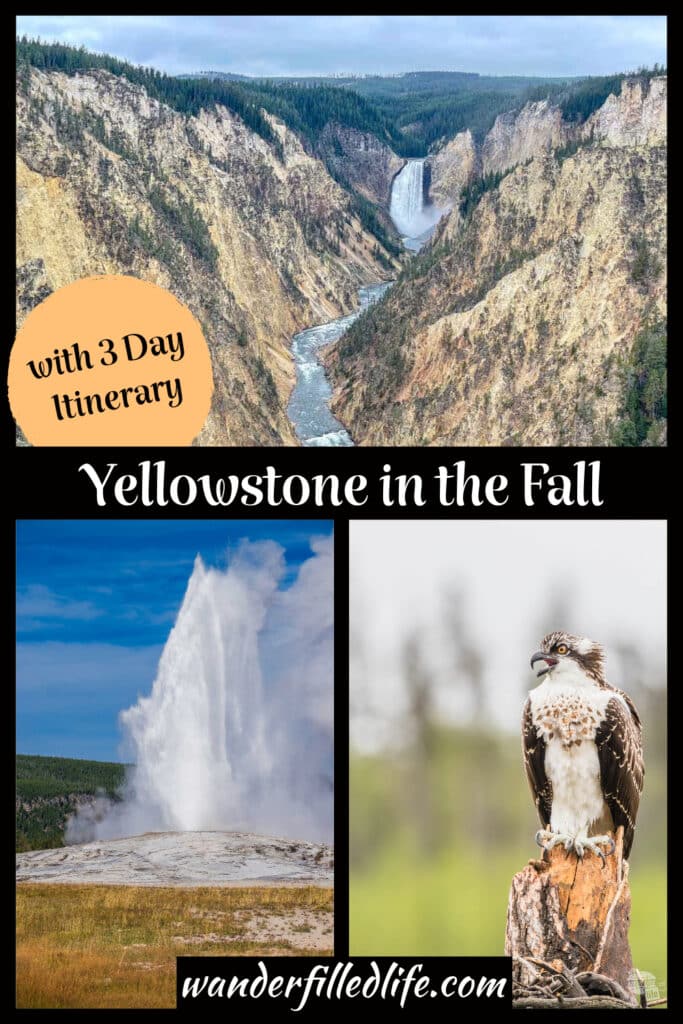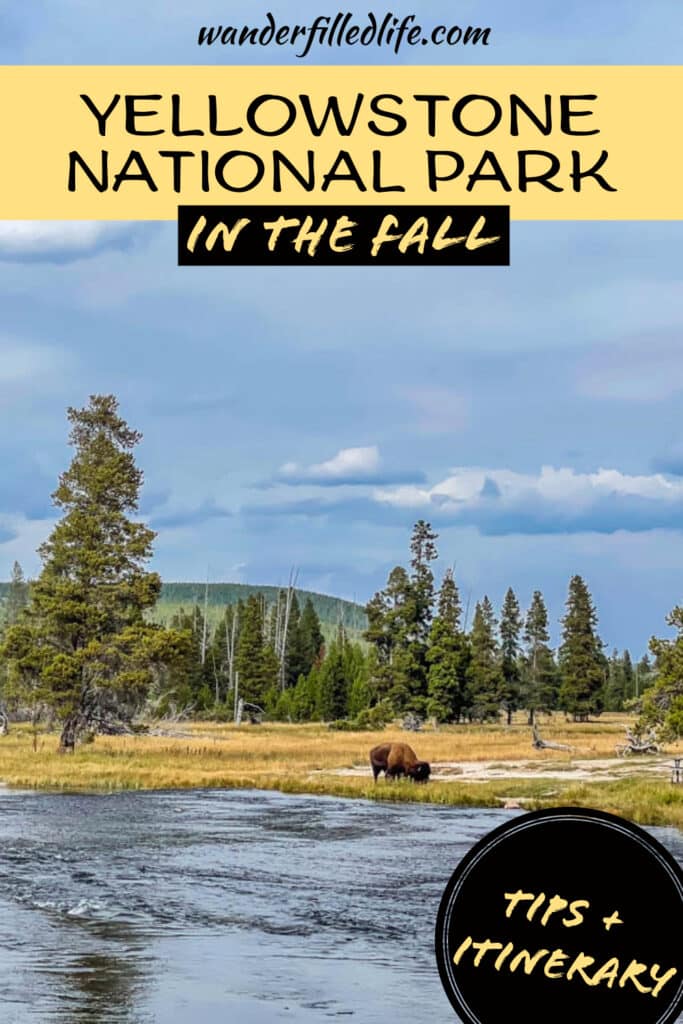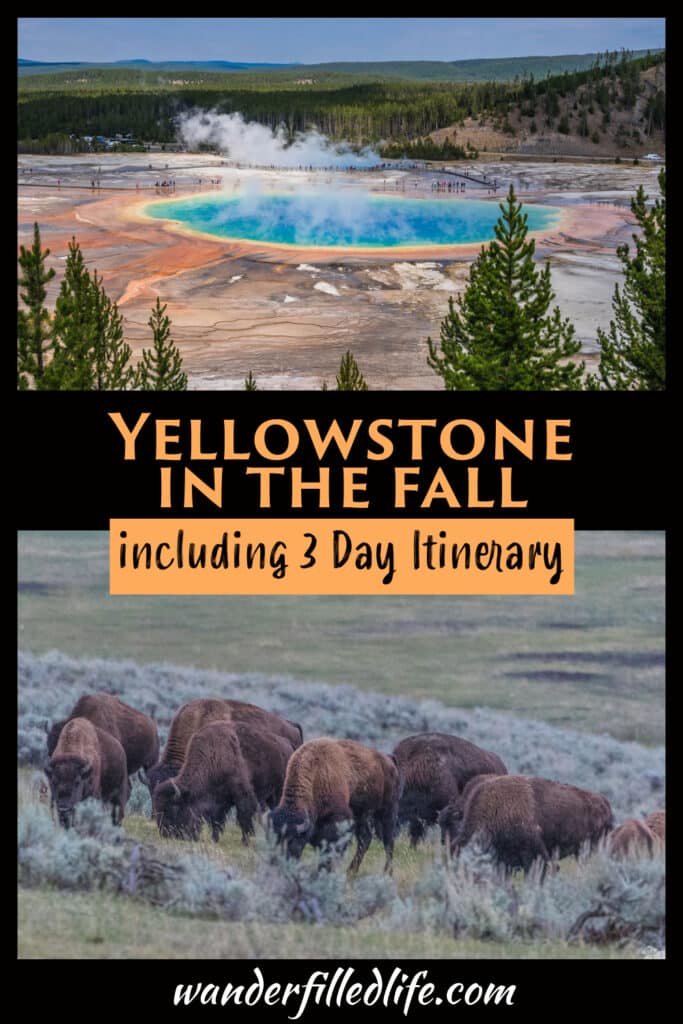Last Updated on February 22, 2024 by Grant
Planning a visit to Yellowstone National Park can be overwhelming. It is a large park, with many things to see and do. Additionally, between winter road closures and summer crowds, simply finding the right time to visit can be difficult. We recently made our first visit to Yellowstone in the fall and thought it was a great time to be there.
As with many places, Yellowstone tends to be less crowded in the fall. And, if you time it right, you could enjoy some nice fall colors. Finally, the elk rut typically occurs in September, which can make for some thrilling wildlife watching.
But, following Labor Day weekend, there are fewer options for lodging, food and recreation, especially inside the park. Additionally, winter weather is a real concern this time of year. Most roads close for the season on November 1 and temporary road closures are likely in late September and throughout October.
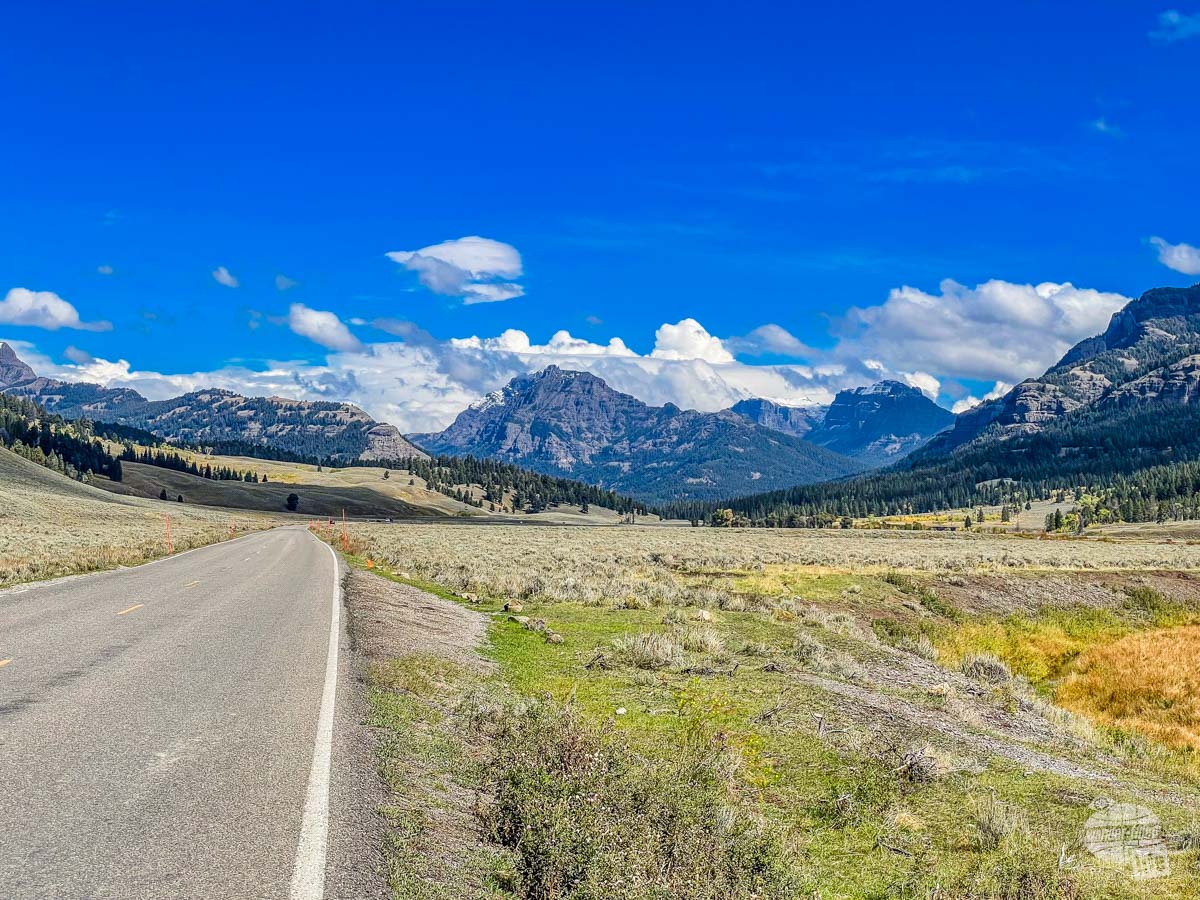
So, while fall is a great time to visit Yellowstone National Park, there are some things to consider in order to have a successful trip. In this article, we’ll share some of our tips for planning a fall visit to Yellowstone, along with a three-day itinerary.
(Disclaimer: When we link to places where you can buy our stuff or places we stayed, we are using special codes that earn us commissions on the sales at no additional cost to you. Please see our Review Policy for more information.)
What to Expect at Yellowstone in the Fall
The first thing to understand if considering a fall visit to Yellowstone is that fall comes early, quickly followed by winter. Even early September can be considered fall and by October, the winter road closures are quickly approaching. So, while visiting Yellowstone in the fall is great, it is a fairly small window.
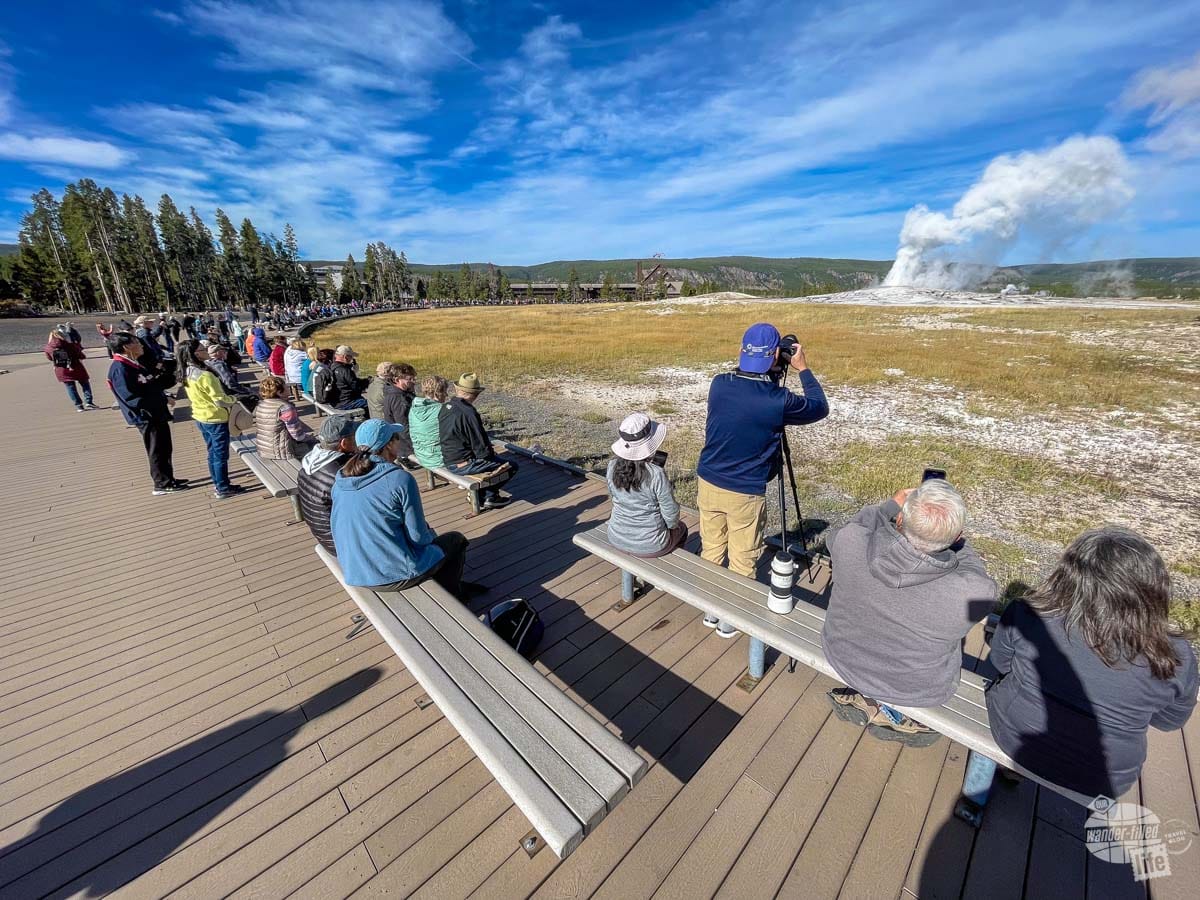
One of the biggest perks to visiting Yellowstone in the fall is smaller crowds. That said, September is an increasingly popular time to visit. According to the Cowboy State Daily, visitation in September 2023 grew 48% over September 2022. And, since overall visitation is increasing, current trends for September are similar to previous trends for the summer.
Still, you typically will find fewer people in September (especially later in the month) than in the height of the summer, which is typically July. And there will be even fewer people in October and November.
But, you also have to balance that with fewer services and the potential for winter weather. Basically, you’ll need to be a bit more self-sufficient (especially in terms of food) and be prepared for road closures.
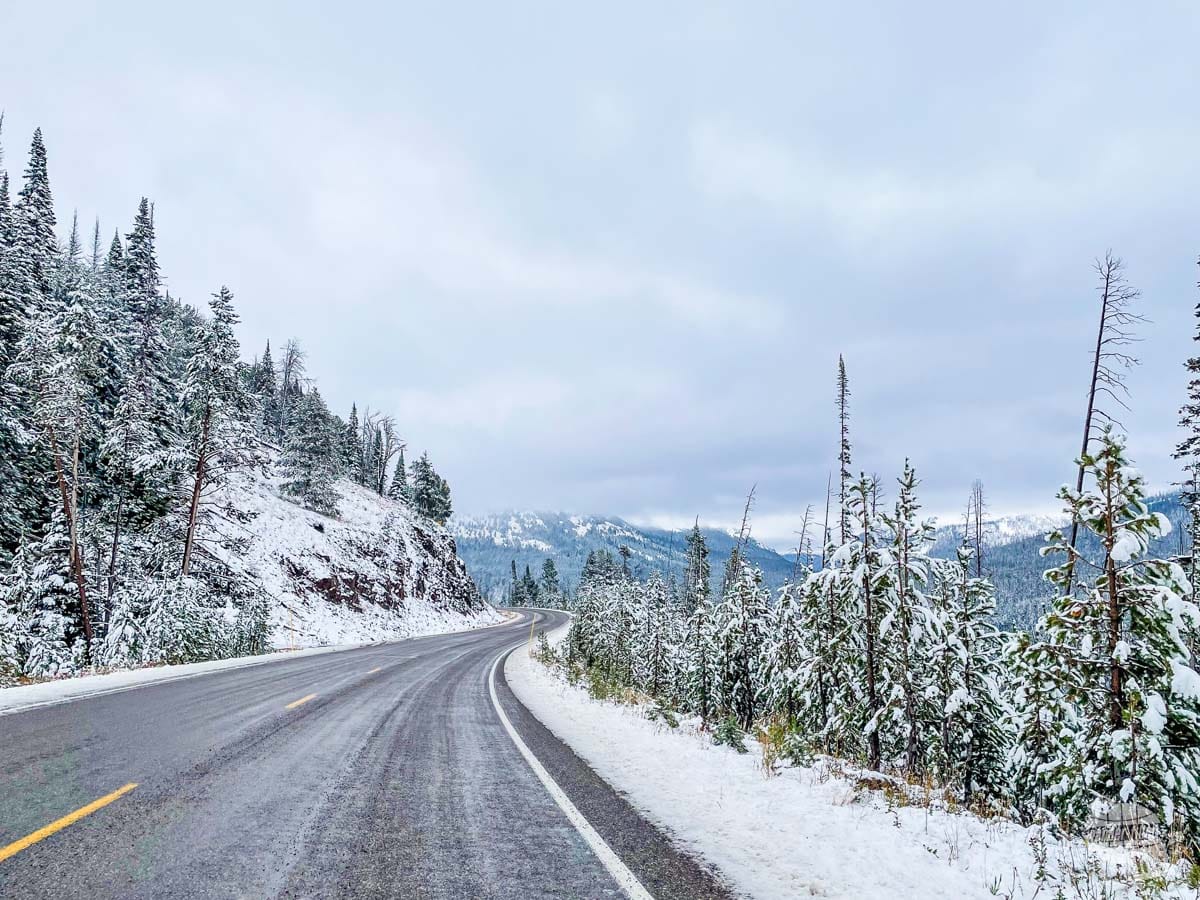
When we visited in late September 2023, we definitely noticed the reduced options for food. Since we flew in, we didn’t have a cooler or any ability to fix food for ourselves. So, we made a point to keep a few snacks in the car. And, we planned our time so that we would be near a dining area around meals. That worked well but certainly meant less flexibility in our itinerary.
In terms of weather, we had to adjust our plans leaving the park due to snow. Originally, we had planned to drive out the northeast entrance, taking the Beartooth Highway on our way back to Billings. We ended up driving out the east entrance, which also had a good amount of snow at the higher elevations.
Read all 11 of our tips for visiting Yellowstone National Park.
Yellowstone Wildlife in the Fall
In terms of wildlife, it was really hit or miss. I think we missed the elk rut by about a week. We saw a few elk around Mammoth, which is generally a popular place to find them. But we really didn’t see them anywhere else around the park.
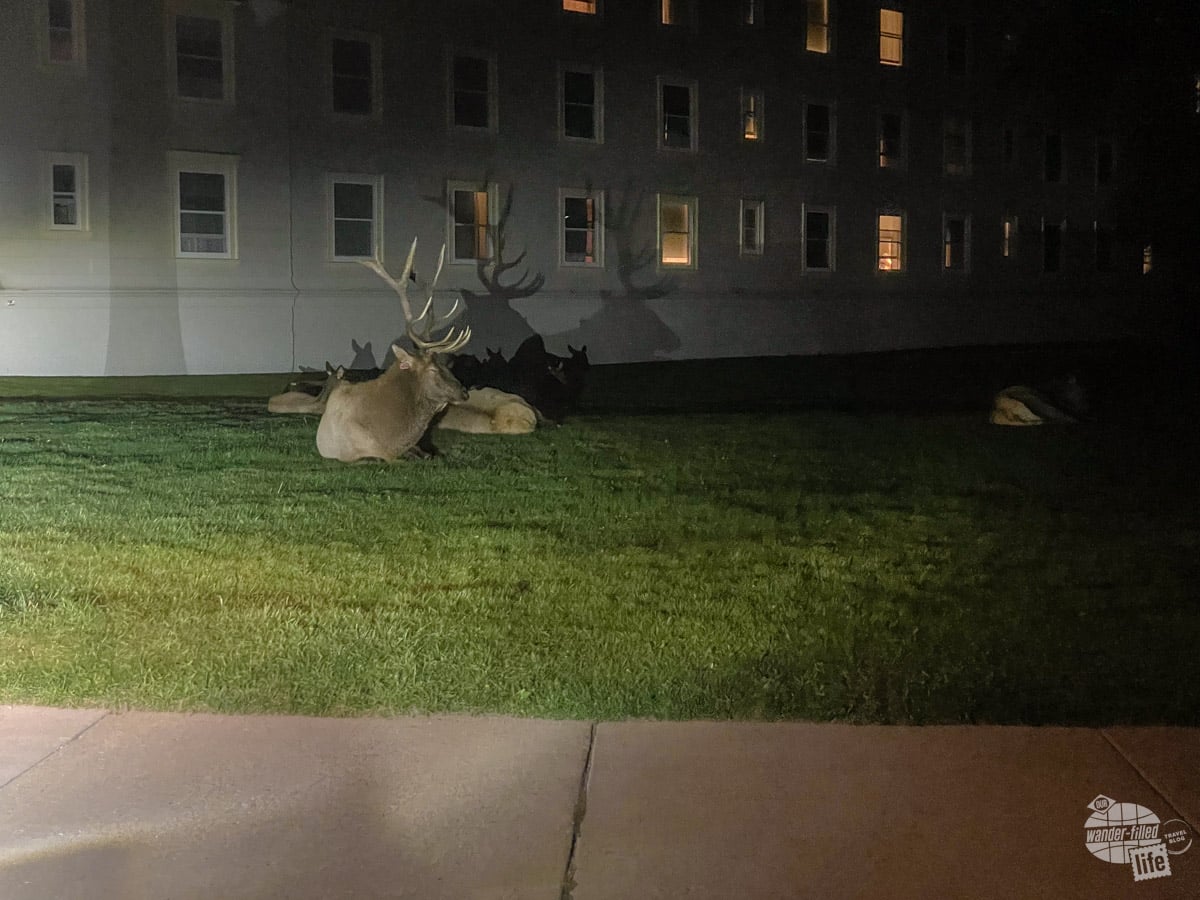
And, we definitely didn’t see the same behaviors as when we visited Rocky Mountain National Park at the same time a few years ago.
We saw plenty of bison but it definitely seemed like we saw fewer than on most of our summer visits. As usual, we saw the most bison in Lamar Valley. We even had a somewhat nerve-wracking experience when we got stuck in a bison crossing after dark. And we also got to watch a few bison butting heads while stuck in construction traffic one afternoon.
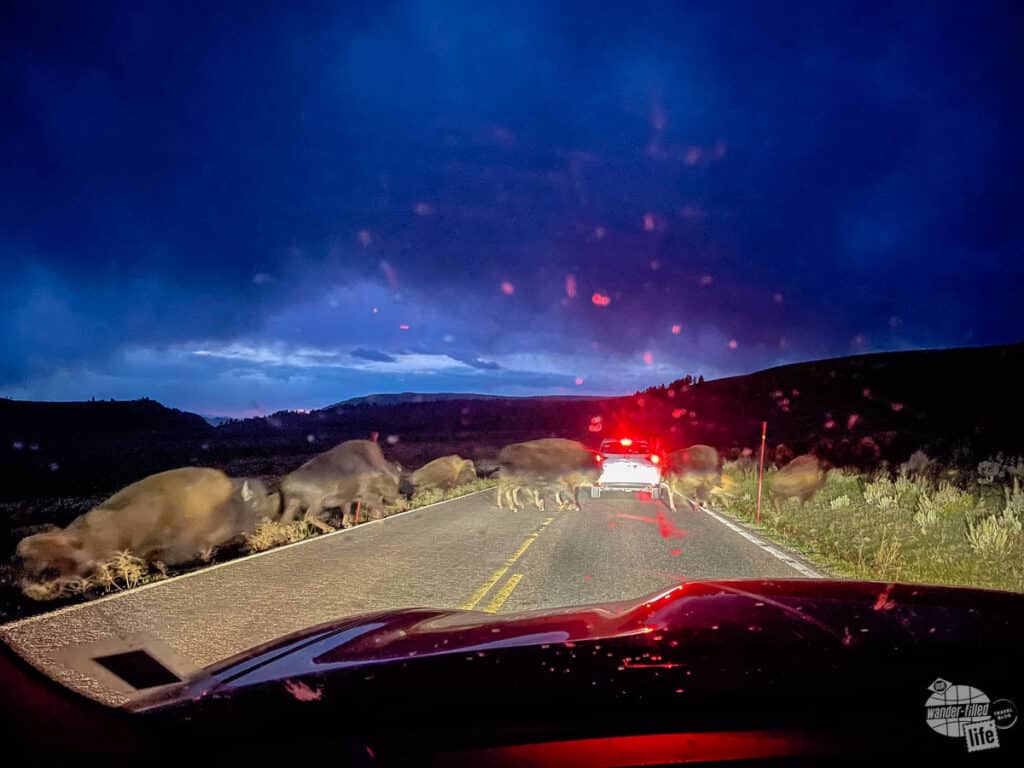
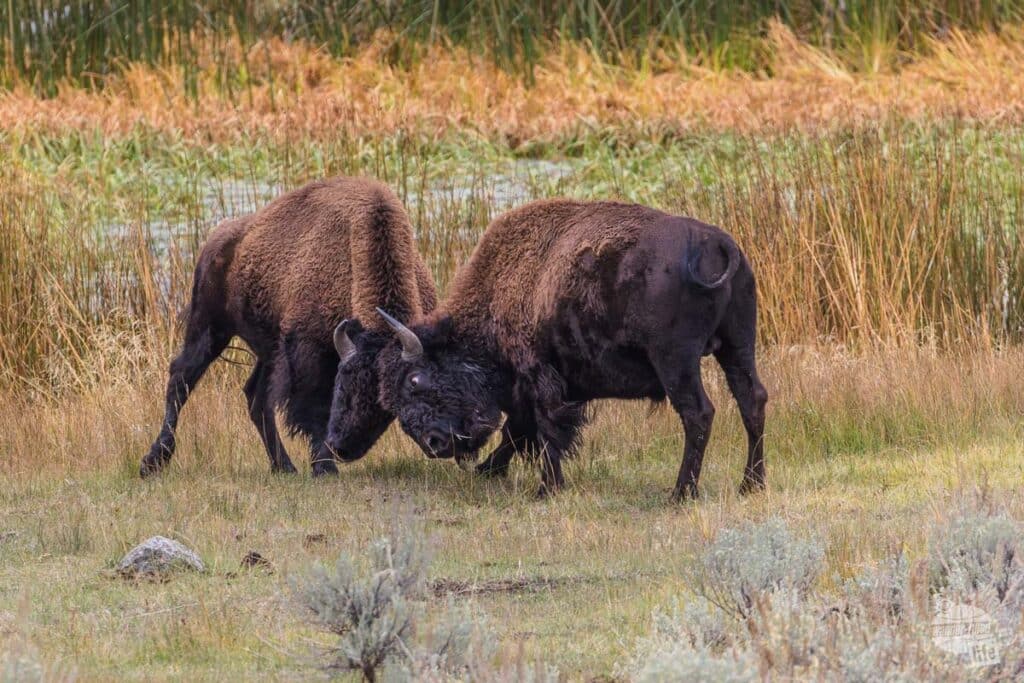
But, again, we really didn’t see many bison in other areas of the park. I know the bison tend to move around based on the weather. So, I think they were just hanging out where we couldn’t really see them.
Of course, seeing wildlife is always hit or miss any time of year. But, it definitely seemed like we saw less wildlife during this fall visit than we generally do in the summer. I’m sure some of that is due to luck and timing but some might be due to seasonal movements of the animals.
Check out Grant’s article on finding and photographing wildlife at Yellowstone.
How to Plan Your Yellowstone Itinerary
Despite having been to Yellowstone several times, we still struggled a little bit in planning our itinerary for visiting Yellowstone in the fall. Part of that was limited time. While you can see most of the highlights of Yellowstone in three days, it is not enough time to see everything.
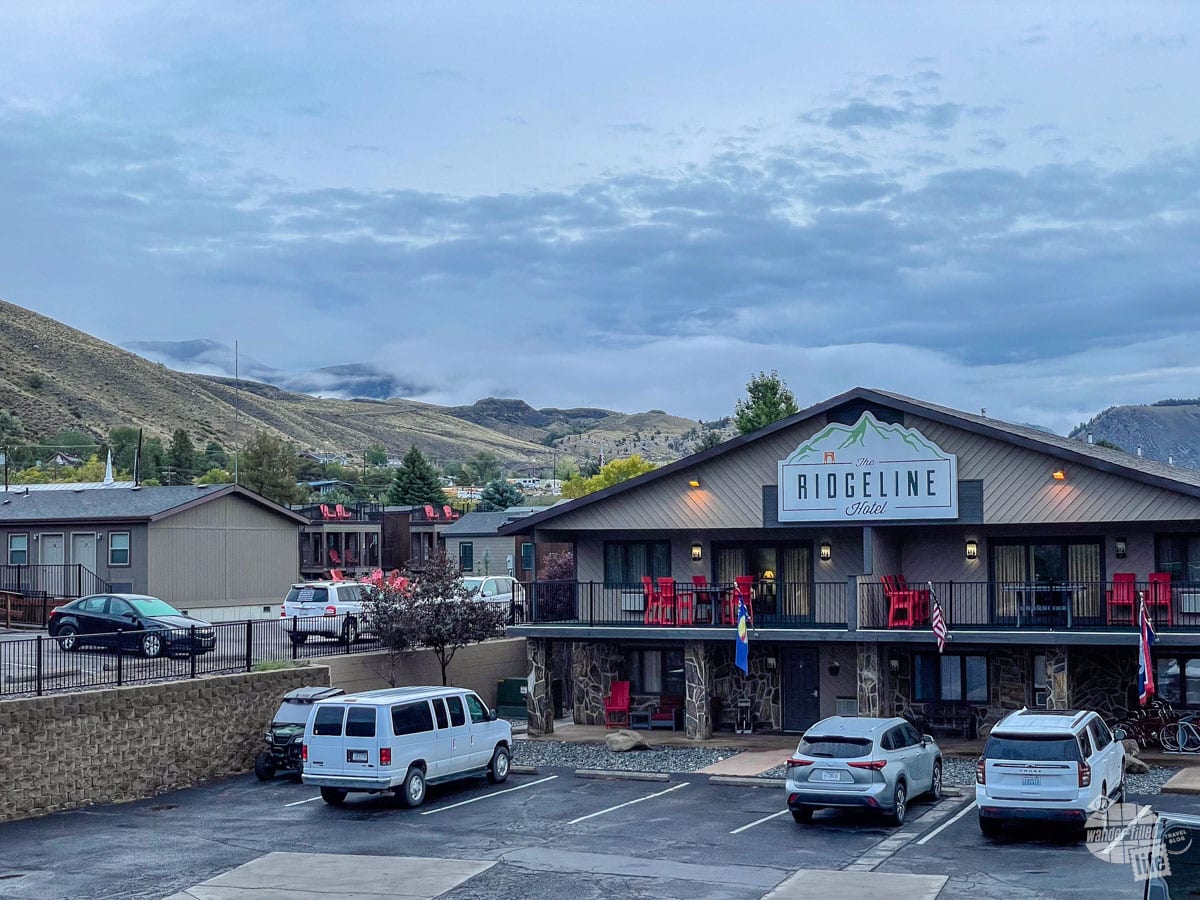
Additionally, due to high prices and limited availability of hotels inside the park in the fall, we opted to stay in Gardiner for three nights. That meant long days of driving to get to the central and southern parts of the park. Finally, the threat of rain most days had us rearranging our plans several times based on the weather.
Still, we ended up seeing and doing almost everything on our wish list for this trip. We even had time to squeeze in a few extra things!
Where to Stay
Due to the size of Yellowstone, where you stay will have a major impact on your itinerary. It can take hours to drive from one area of the park to another. Staying in one location for several nights can mean driving 2-3 hours one way to reach other parts of the park.
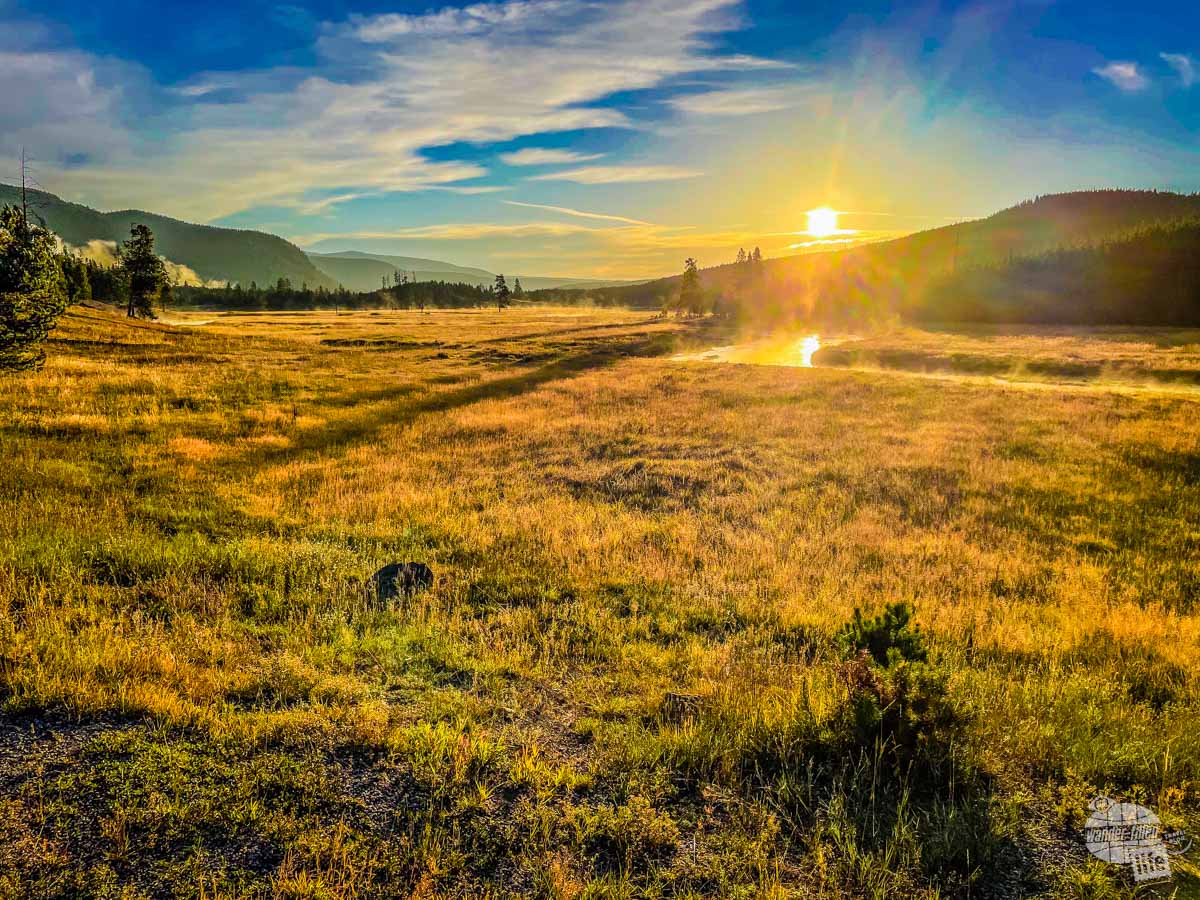
Thus, we generally prefer to stay inside the park. That truly is the easiest way to save on driving time. But, that usually means camping since our budget can’t typically afford the hotels inside the park for several nights. That really wasn’t an option on our fall visit since we flew from Atlanta to Billings.
So, if you can move hotels every 1-2 nights, that would be ideal. But, sometimes you just have to roll with what’s available. As such, please adjust our itinerary below to meet your needs based on where you are staying, weather, road closures, crowds or any other personal preferences.
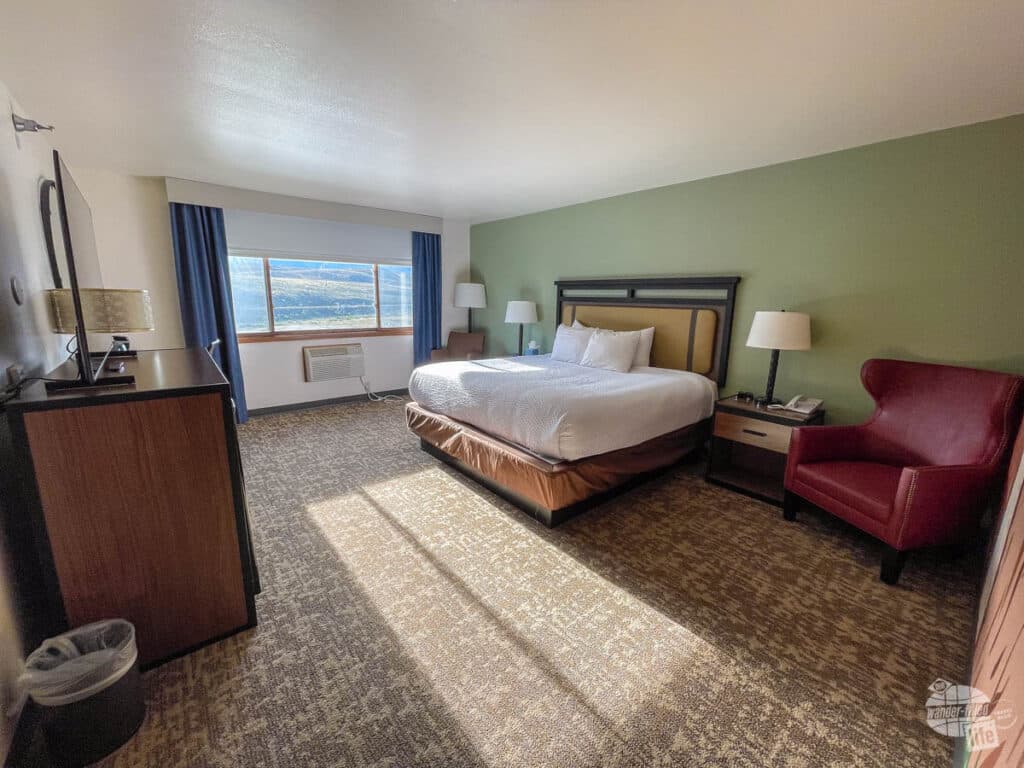
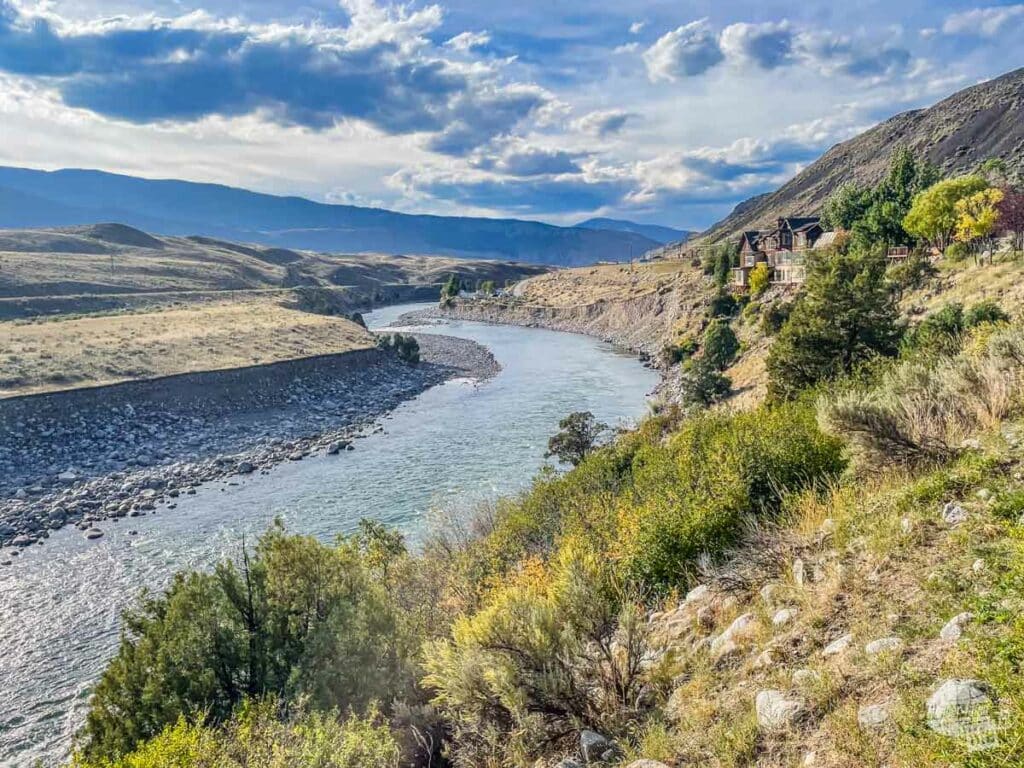
For our fall visit, we stayed at the Ridgeline Hotel at Yellowstone, Ascend Hotel Collection. We managed to get a great deal paying with Choice Hotel points, which we converted from Citi ThankYou Rewards Points. While the hotel wasn’t particularly fancy, it was clean and comfortable. Our only real gripe is that it did not include breakfast. Still, we would stay here again.
Read TripAdvisor Reviews and Book the Hotel
Read more about where to stay when visiting Yellowstone National Park.
Our Three-Day Yellowstone Itinerary
This three-day Yellowstone itinerary is based on our fall 2023 visit. We stayed in Gardiner for the first three nights. For the fourth night, we splurged on the Lake Yellowstone Hotel. This itinerary would also work fairly well if staying in West Yellowstone or just about anywhere inside the park, with a few adjustments.
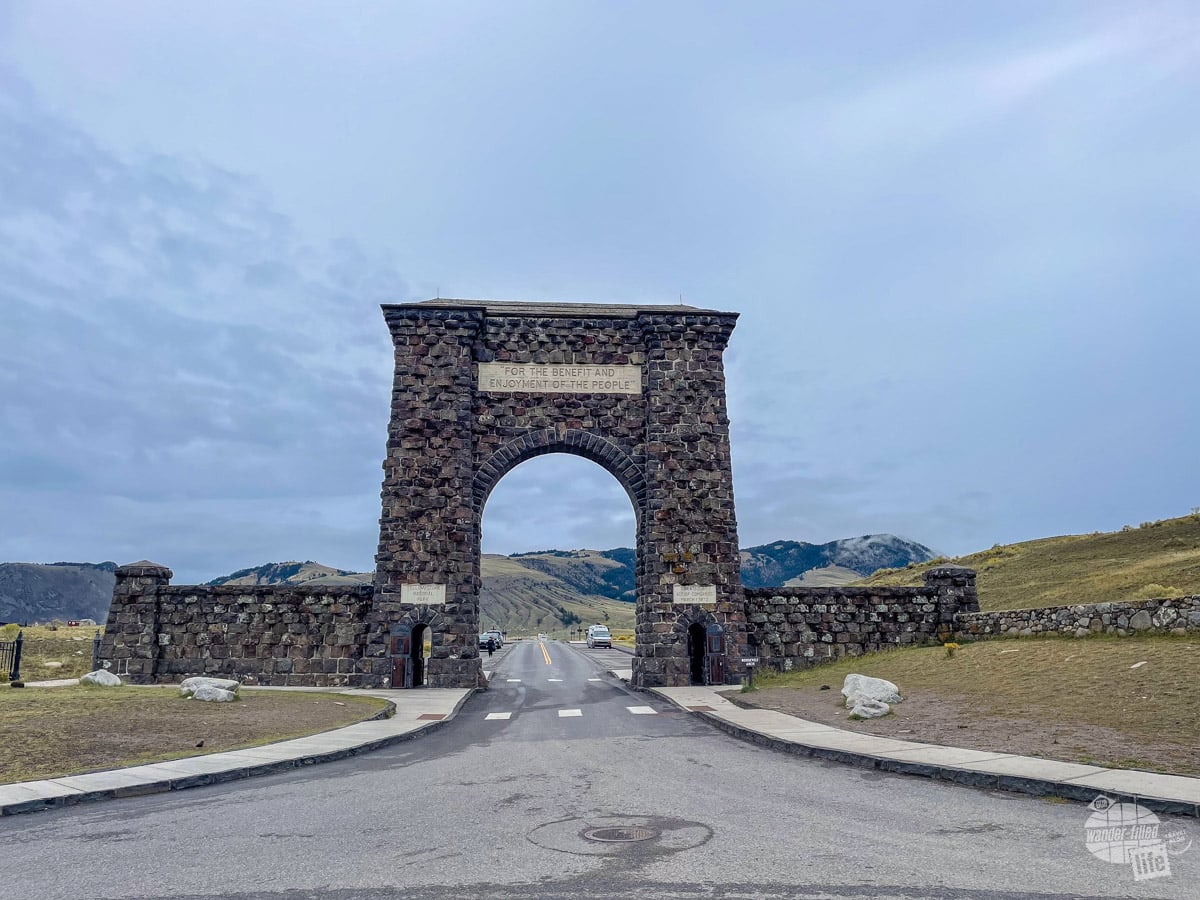
Be sure to get the park map and newspaper when entering the park. These have valuable information about where to find services, what is open, road construction and more. Consult this early and often to make sure you know what is available in various areas of the park.
Day 0 – Wildlife Watching in Lamar Valley
Plan to arrive early enough to drive into the park for some evening wildlife watching. Lamar Valley is typically one of the best places for that and is fairly easy to reach from Gardiner. That said, it will still take you at least an hour to make the drive one way. Thus, I’d budget at least 3-4 hours for this.
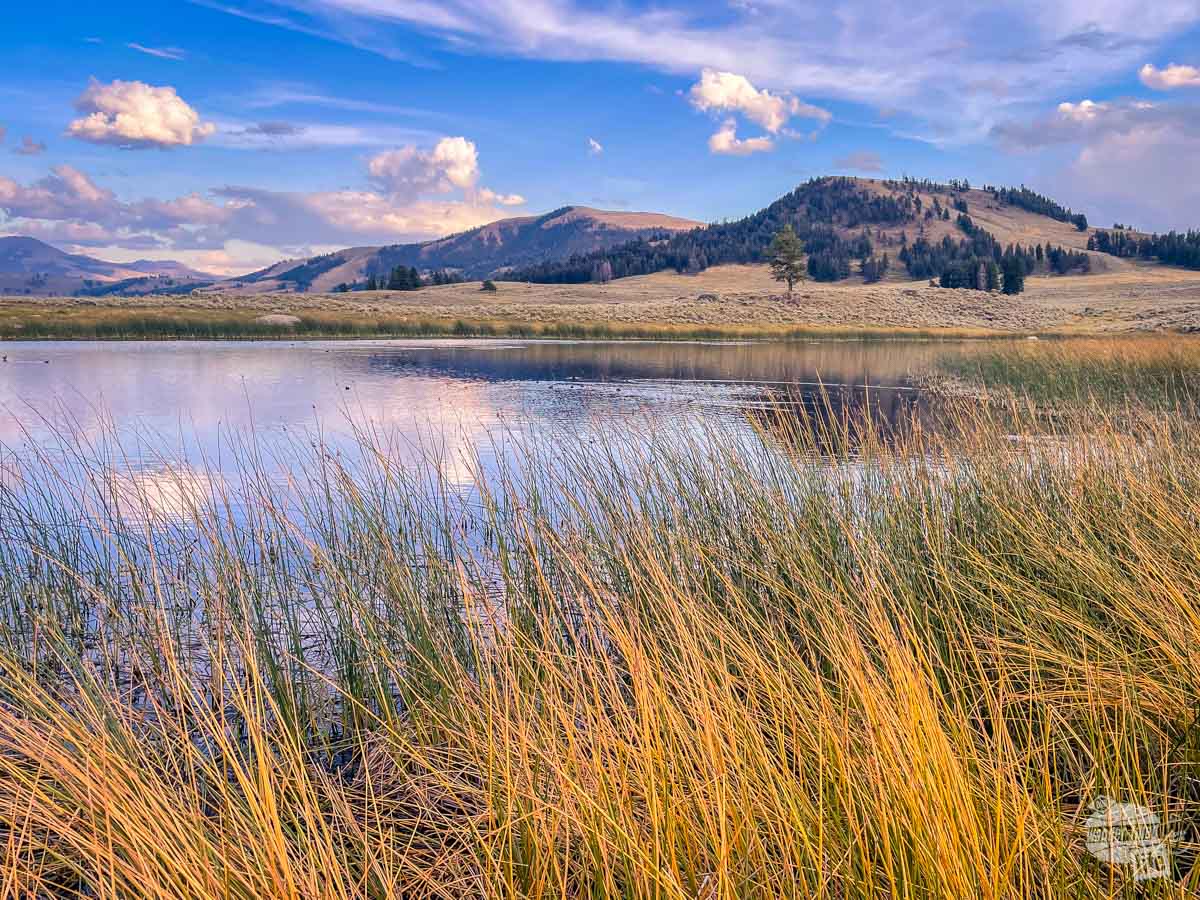
We arrived in Gardiner a little later than expected but had our hearts set on making it to Lamar Valley. So, we picked up a couple of sandwiches at the Gardiner Market and headed into the park.
Thankfully, we made it to Lamar Valley just before sunset and managed to get a few good photos. We found a spot to pull over and enjoyed our sandwiches while watching a bison herd right around sunset.
Alas, that meant driving back in the dark. After several visits to Yellowstone, we knew that driving in the dark would not be easy. Between wildlife and winding mountain roads, you have to stay alert and on guard the entire time. You simply cannot relax.
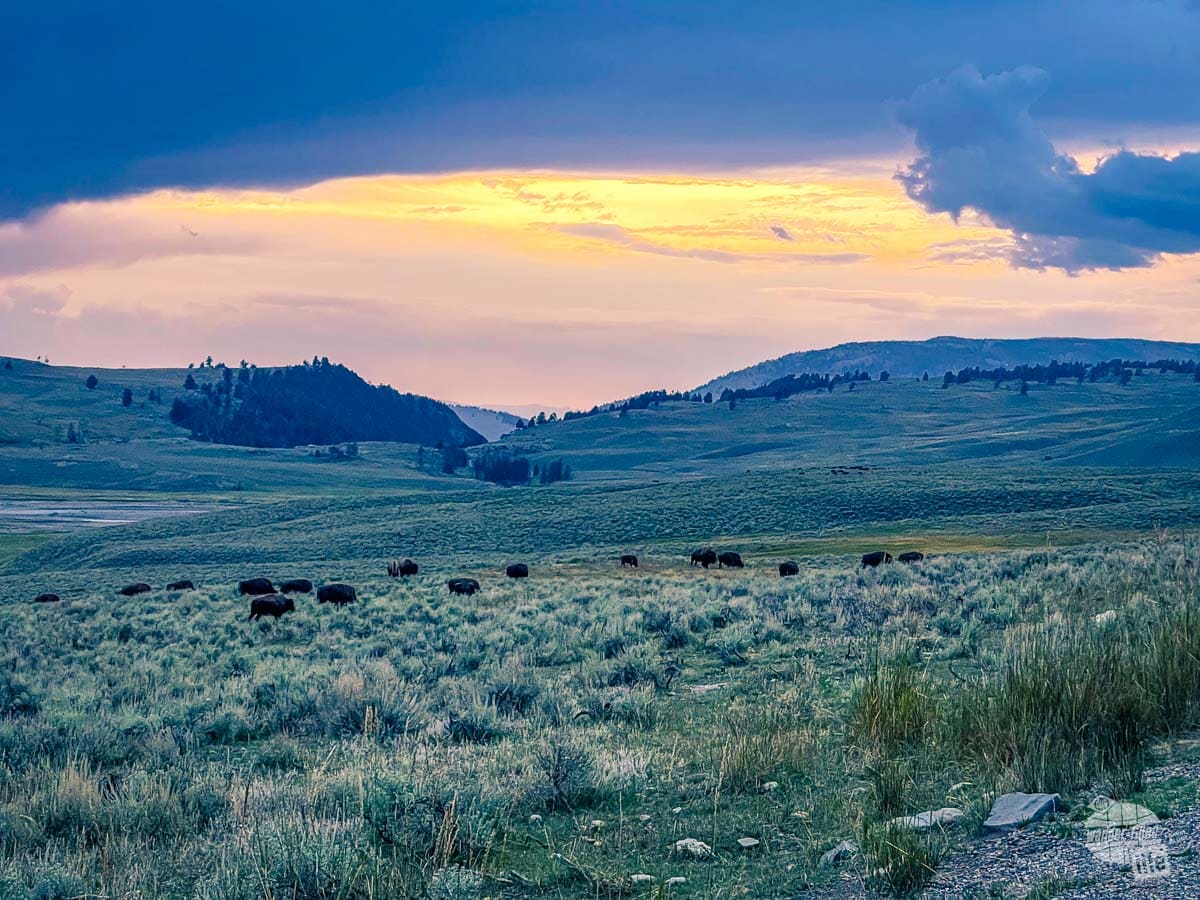
As we were leaving Lamar Valley, a bison herd crossed the road in front of us. Yes, that was really cool. But it was also a little terrifying because just when we thought all the bison had crossed, there were more.
Thankfully, there were no major delays after that. For us, it was worth it. But, I probably wouldn’t suggest staying out after dark on your first night in the park on your first visit.
Day 1 – Old Faithful and Grand Prismatic Spring
While there are many spectacular things to see and do in Yellowstone National Park, there is a reason that Old Faithful and Grand Prismatic Spring are so popular. As such, you simply must make it a priority to see these two thermal features.
Morning
Start your day early and make your way to the Old Faithful area. As you drive through, try to resist the urge to stop at every roadside turnout. The earlier you arrive at Old Faithful, the more likely you are to beat the crowds, even in the fall. Of course, if you see wildlife or something else timely, it’s definitely worth the stop!
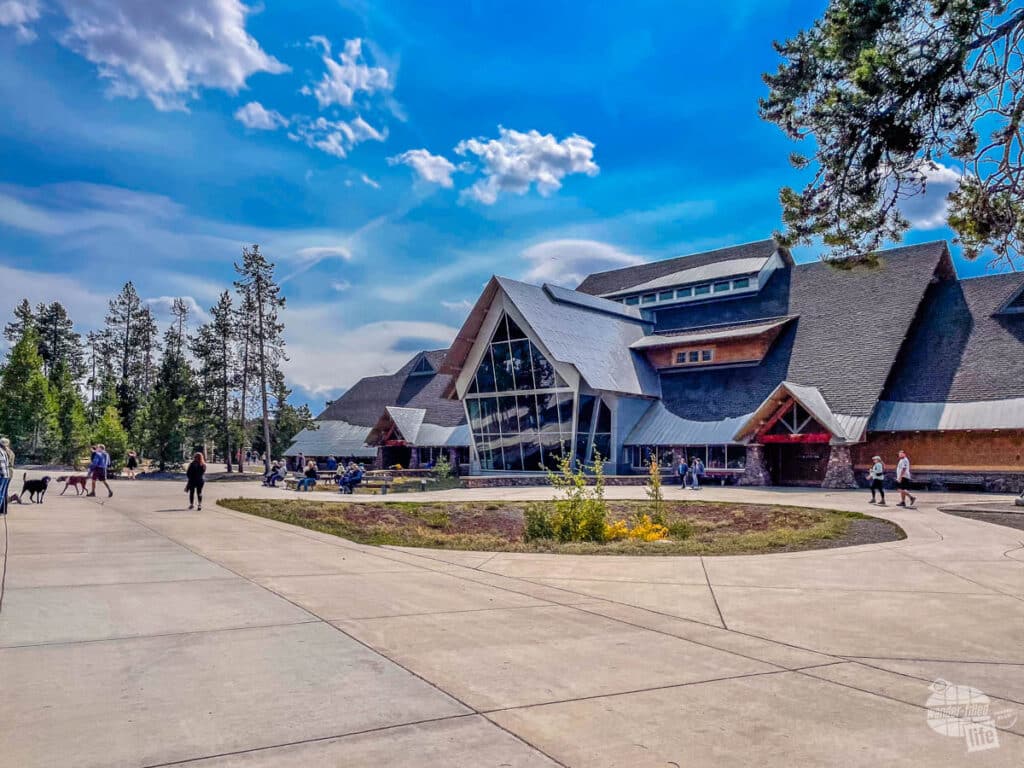
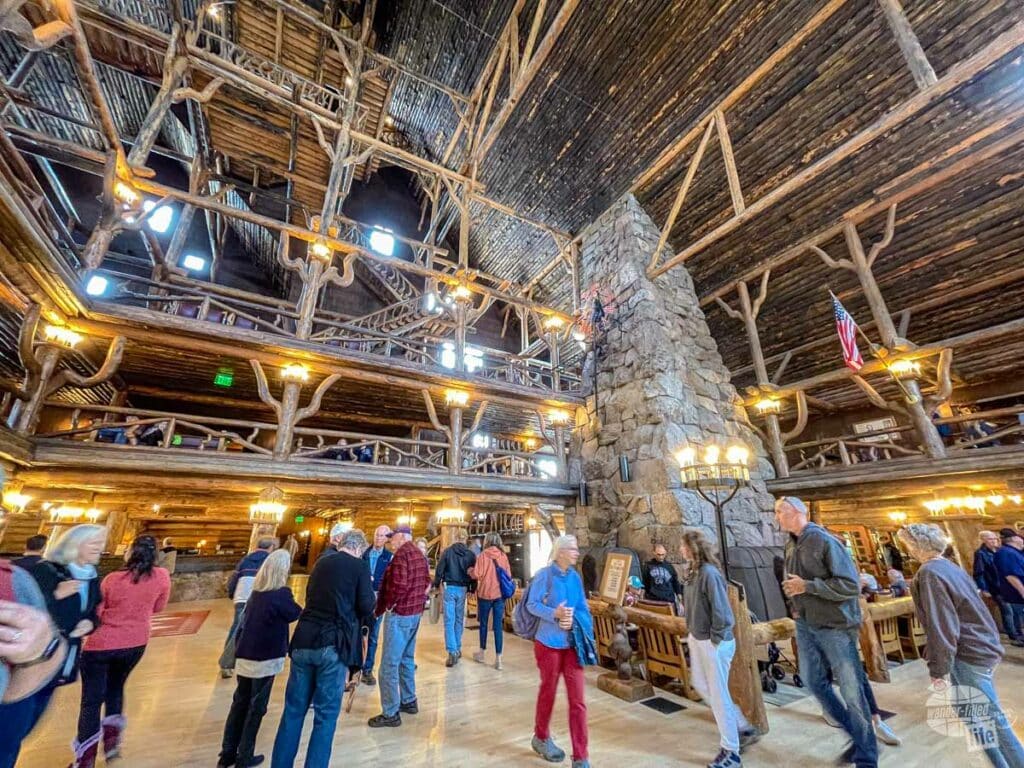
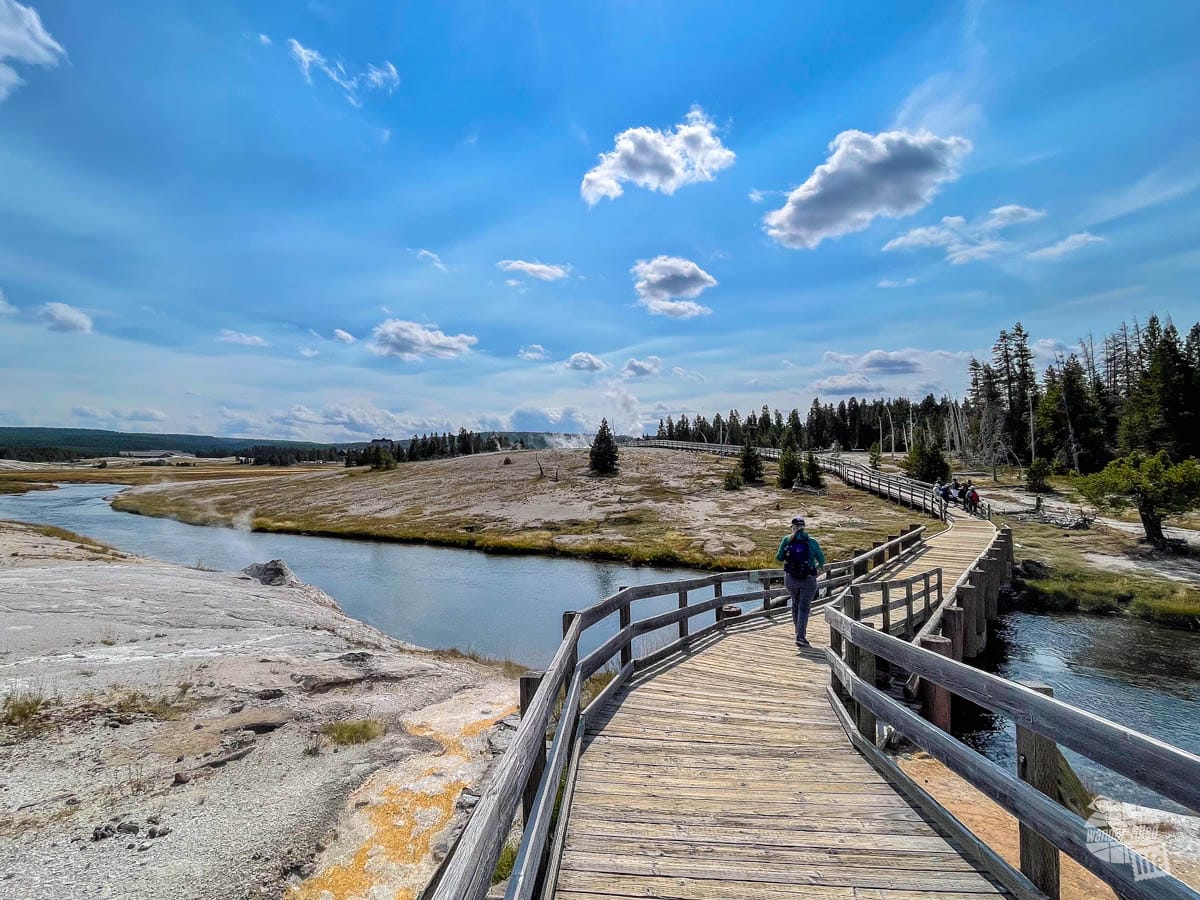
At Old Faithful, your first stop should be the visitor center. If it’s your first visit to the park, chat with a ranger to get answers to any questions. Also, be sure to check the predicted eruption times for Old Faithful and several other geysers, which are displayed by the ranger desk.
While you wait for the next eruption of Old Faithful, check out the exhibits inside, watch the park film or wander around the rest of the Upper Geyser Basin. There is also a Tribal Heritage Center where you will often find Native artists displaying and discussing their creations. Additionally, you can wander through the Old Faithful Inn, where the imposing stone fireplace dominates the multi-story lobby. Basically, there are plenty of things to do in this area for a few hours!
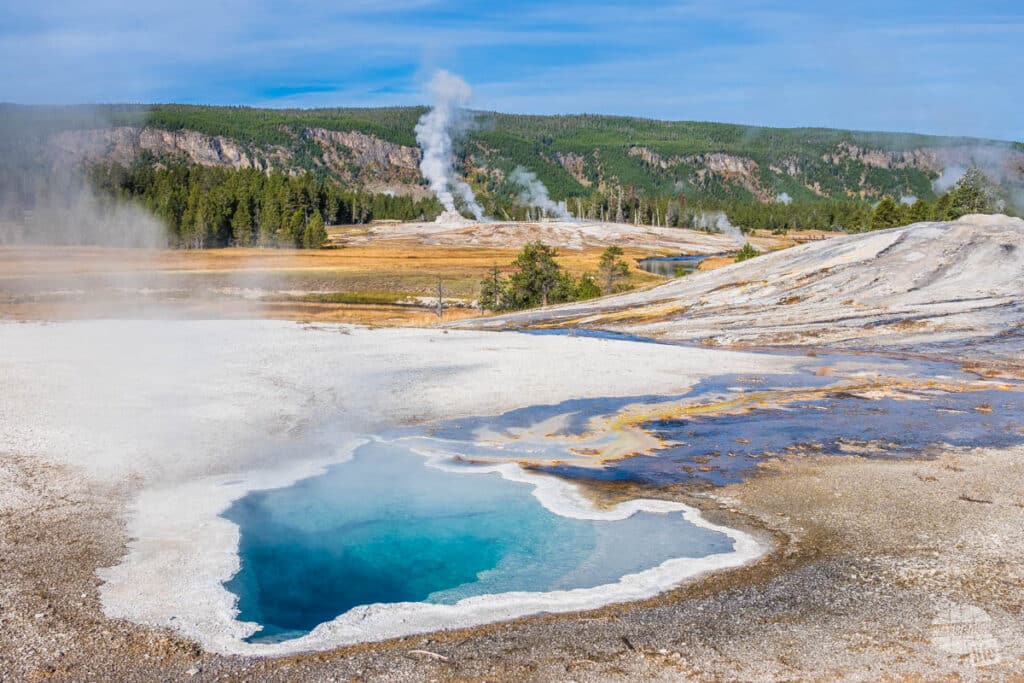
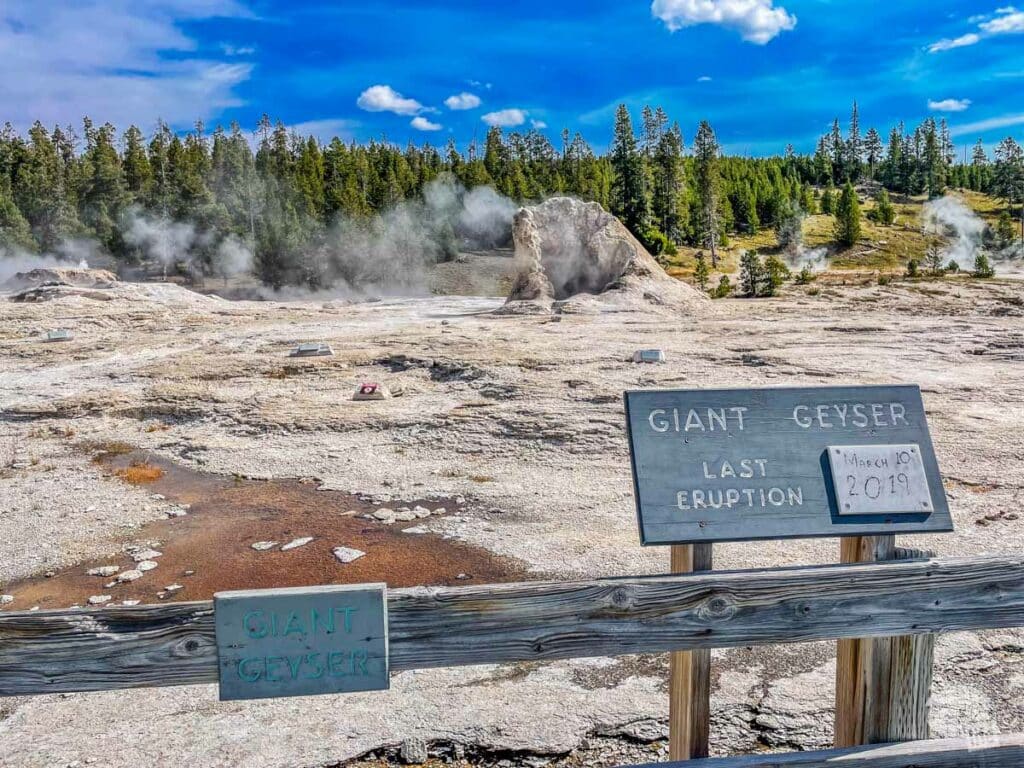
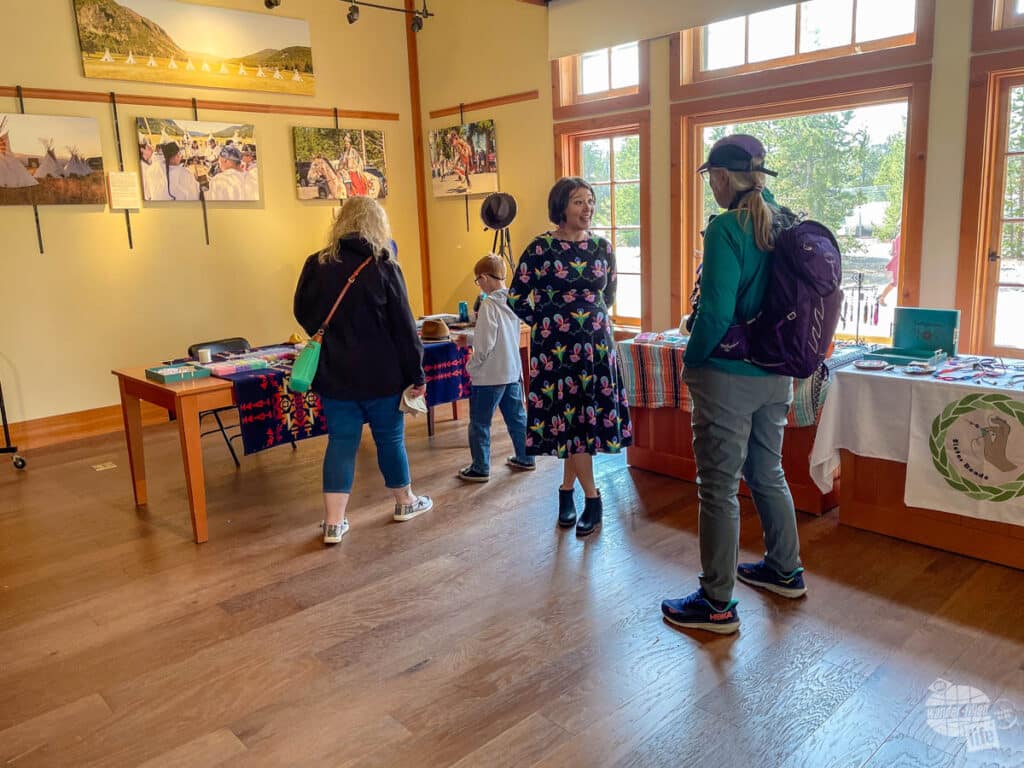
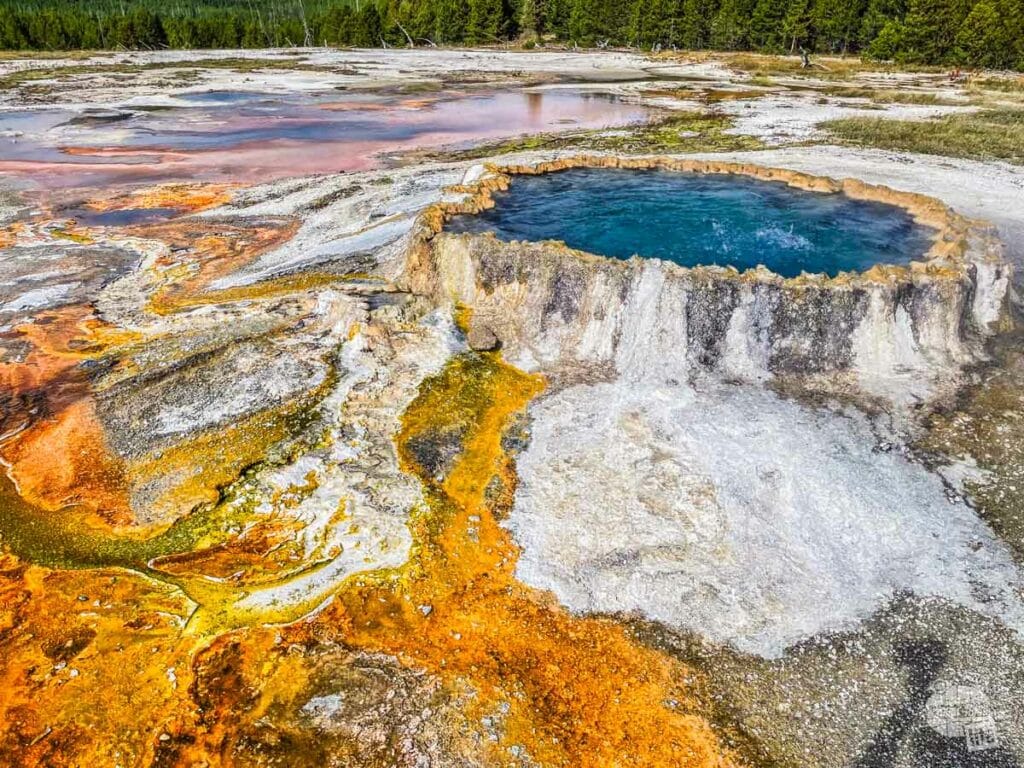
Throughout the geyser basin, there are a few different boardwalks where you can walk to see a variety of thermal features. Some erupt or at least bubble almost constantly. Others are much more intermittent. Wander around, paying attention to the time and make your way to any that you might be able to catch based on the predictions at the visitor center.
And, of course, be sure to make your way back to the Old Faithful viewing area a few minutes ahead of its eruption.
I suggest you grab lunch and do some shopping before leaving this area.
Afternoon
From here, drive north to Grand Prismatic Spring. If you are up for a relatively short hike, park at the Fairy Falls trailhead and make your way to the overlook. The hike is just under 2 miles roundtrip. There is a fairly gentle uphill climb to the overlook, which gets steeper the closer you get. Overall, it is relatively easy and family-friendly, though. We spent about an hour doing this hike and taking several pictures at the overlook.
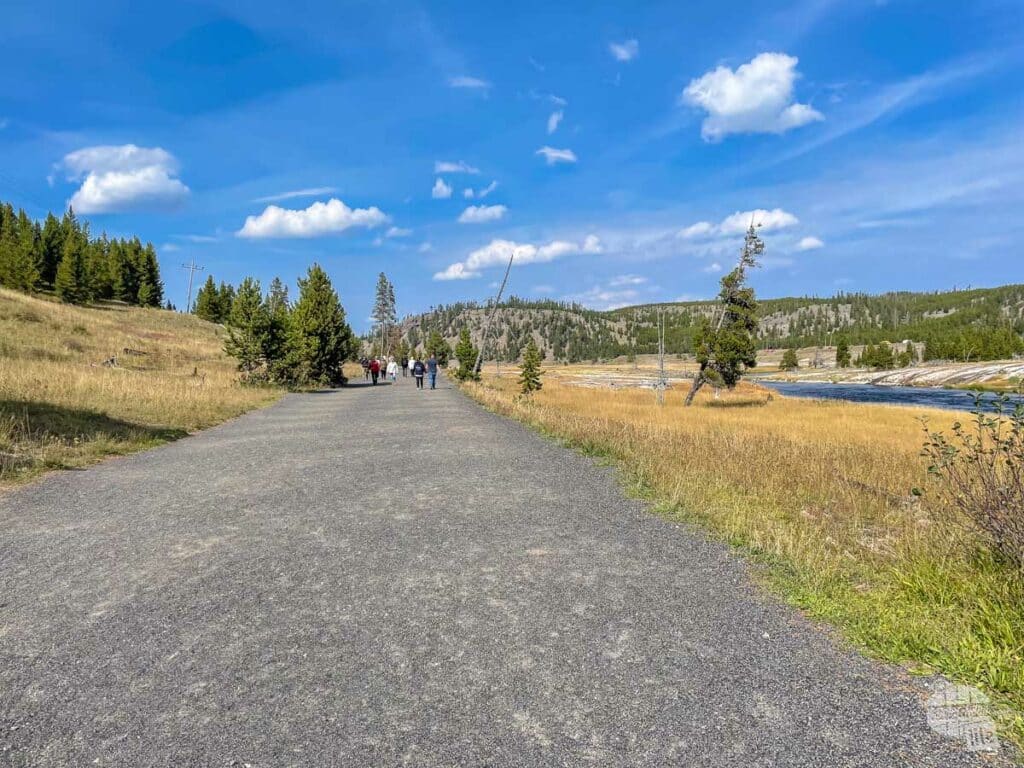
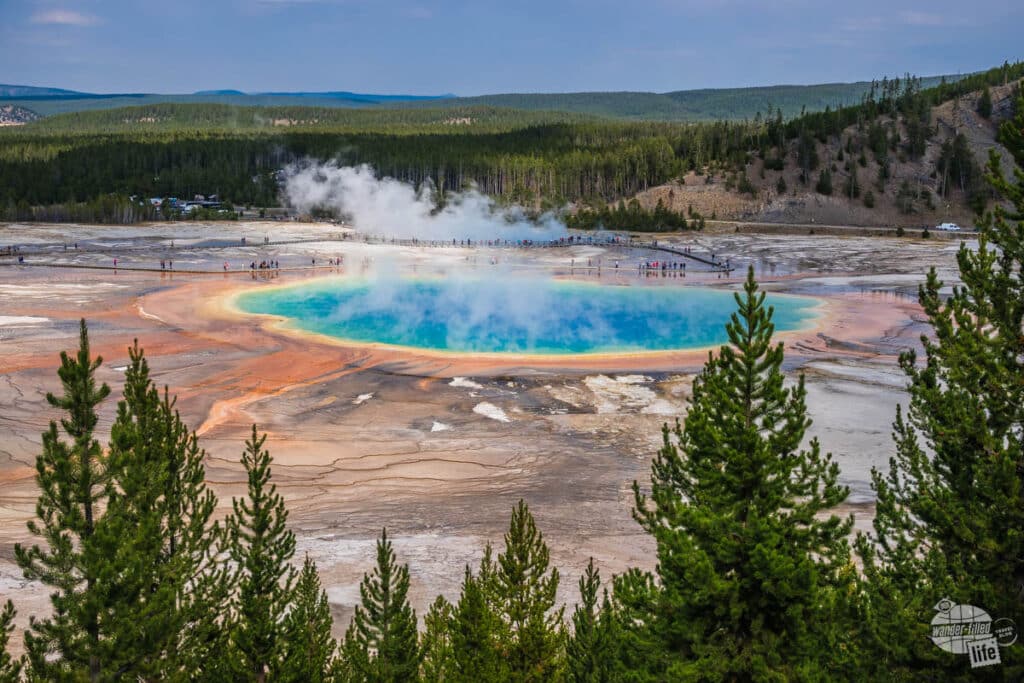
If you aren’t interested in a hike (or if you just want a different perspective), you can park at the Midway Geyser Basin parking lot. From here, a boardwalk winds around Grand Prismatic Spring and a few other thermal springs.
Continue driving north and take the one-way Firehole Canyon Drive, which is just south of Madison Junction. This side road takes you along the Firehole River and Firehole Falls. There are a few areas where you should be able to park and take a few pictures.
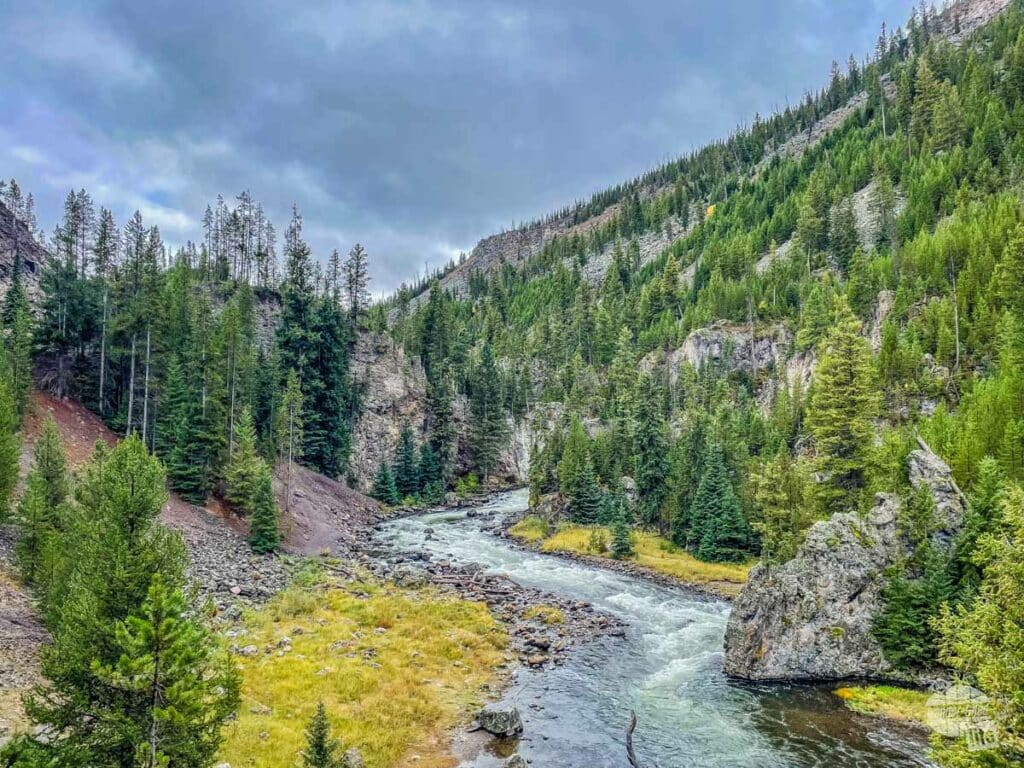
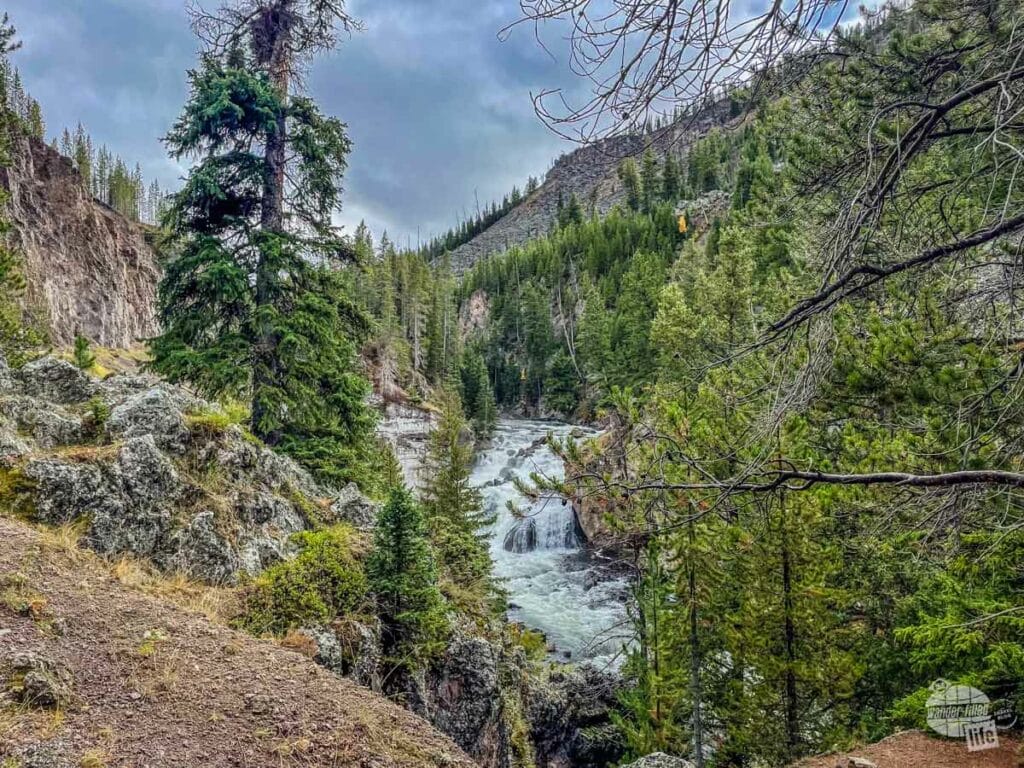
Further north, stop at Norris Geyser Basin, home of Steamboat Geyser, the world’s tallest active geyser. Steamboat Geyser has both minor and major eruptions that are somewhat regular but not predictable. Consider yourself lucky if you manage to catch it spewing.
Of course, there are several other geysers and thermal features in this basin. Choose from a few different boardwalks that loop through the area.
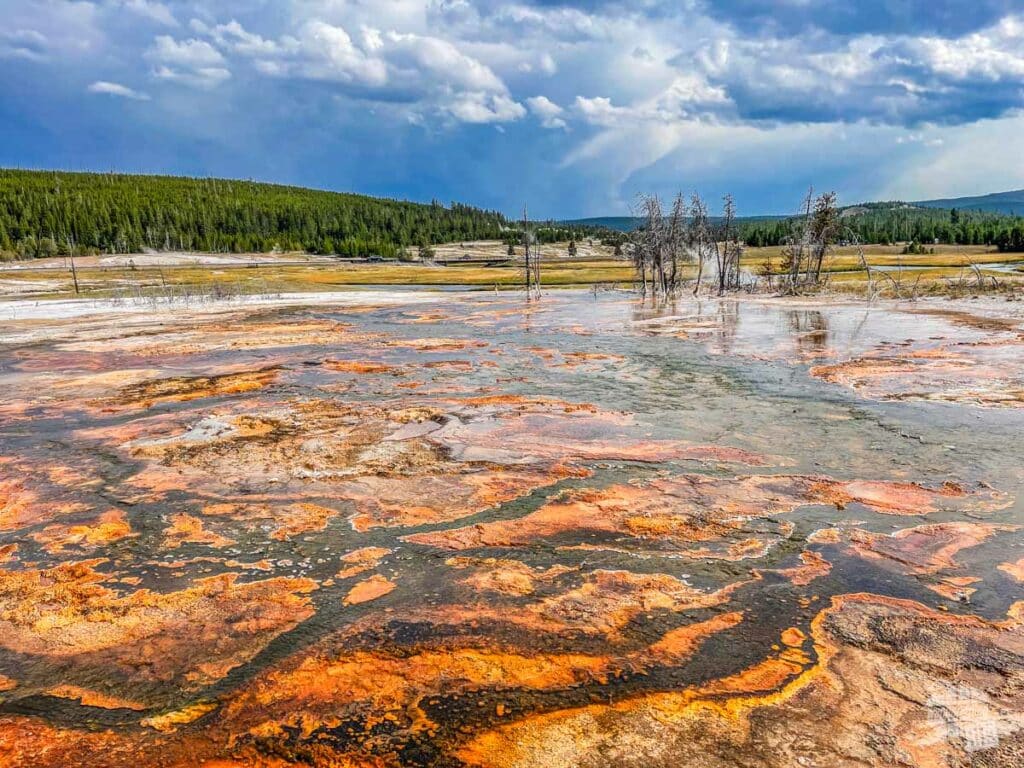
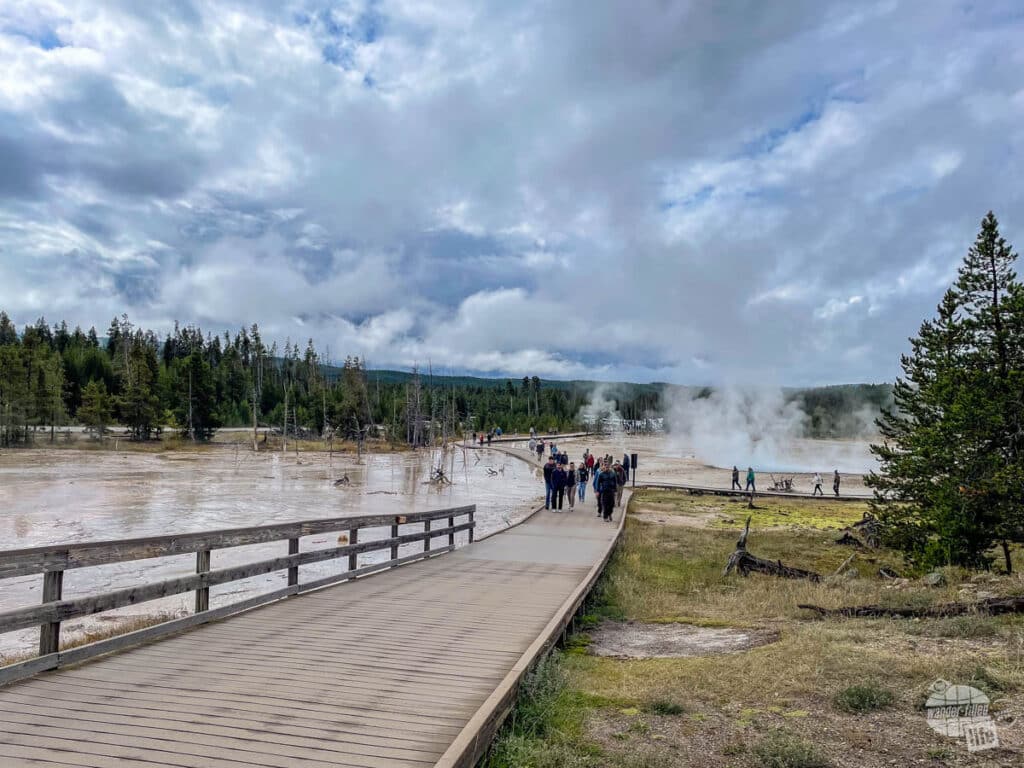
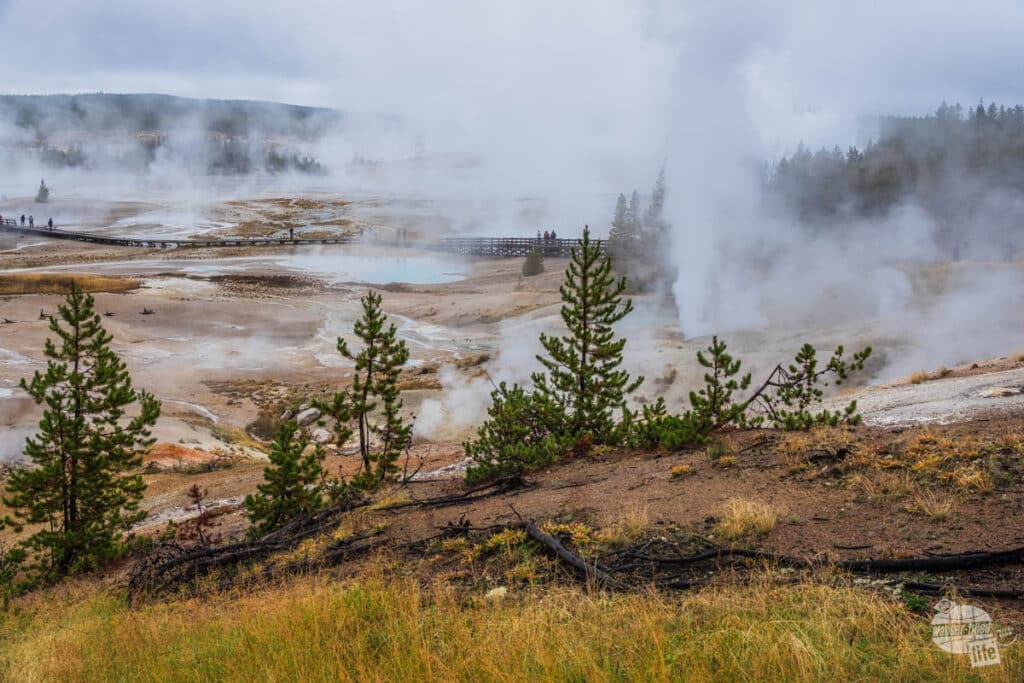
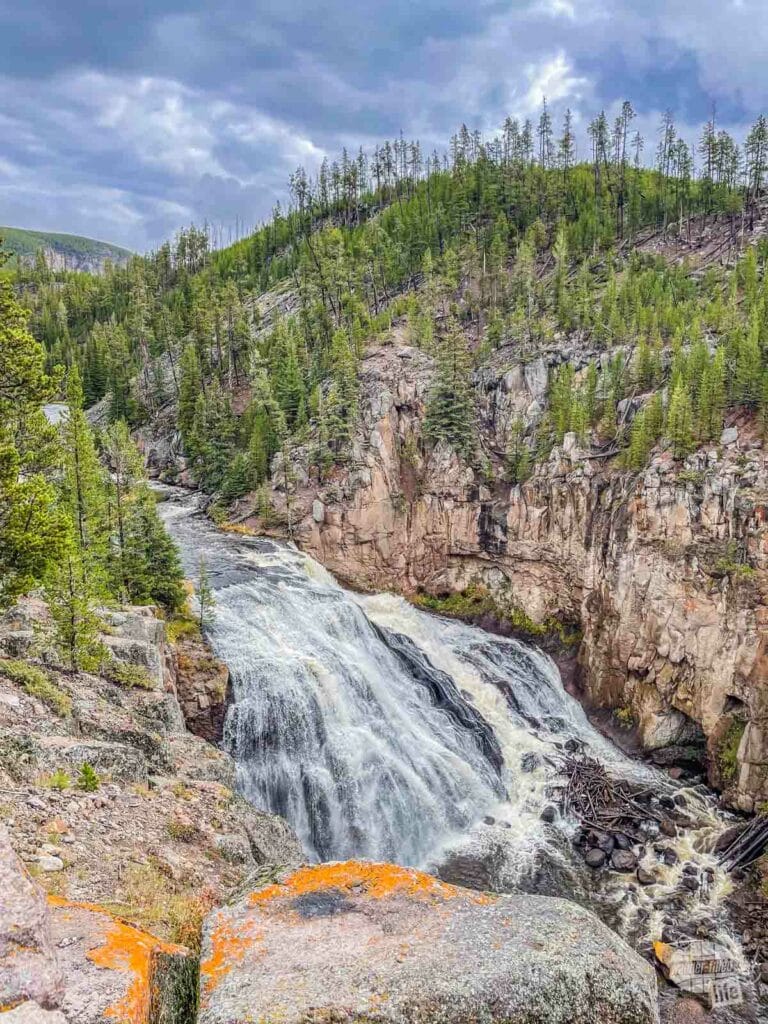
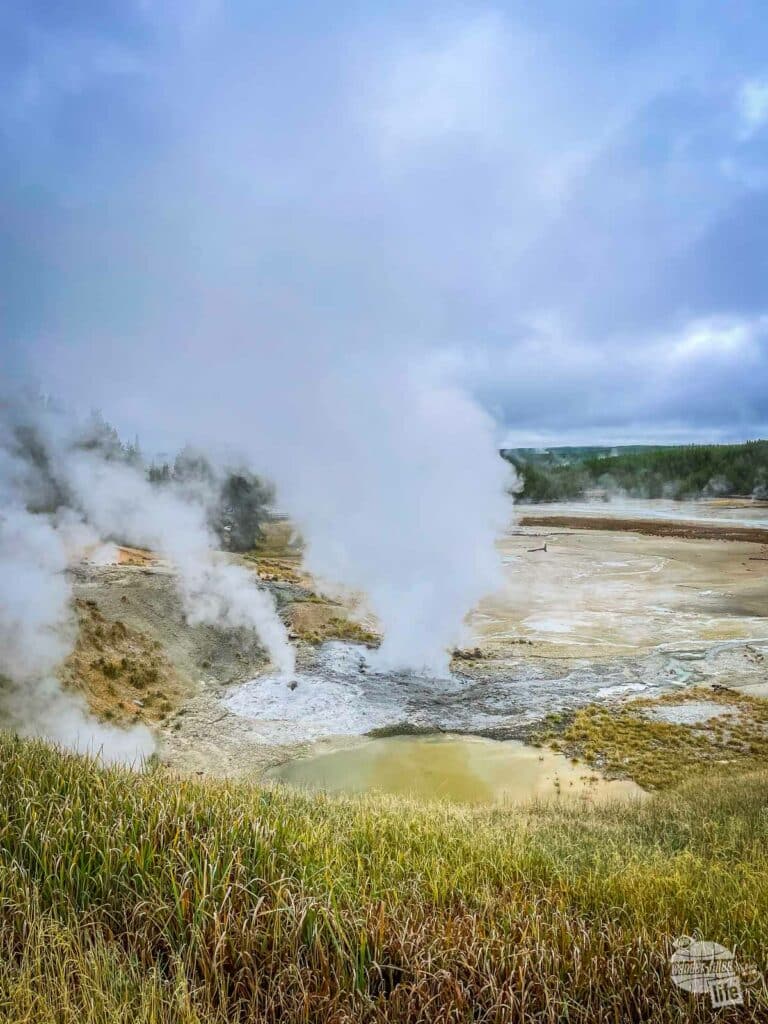
If you have additional time at any point in the day, other great stops in this area of the park include Biscuit Basin, Lower Geyser Basin, Gibbon Falls, Artists Paintpots and Monument Geyser Basin. We also highly recommend the Museum of the National Park Ranger, especially for national park enthusiasts, but I don’t think it’s open in the fall.
Evening
At this point, it will likely be time to start making your way towards dinner and wherever you are staying. As mentioned previously, we do not recommend driving after dark. Unfortunately, in the fall, it gets dark fairly early in Yellowstone.
If you do find yourself driving after dark, take your time and stay alert for wildlife.
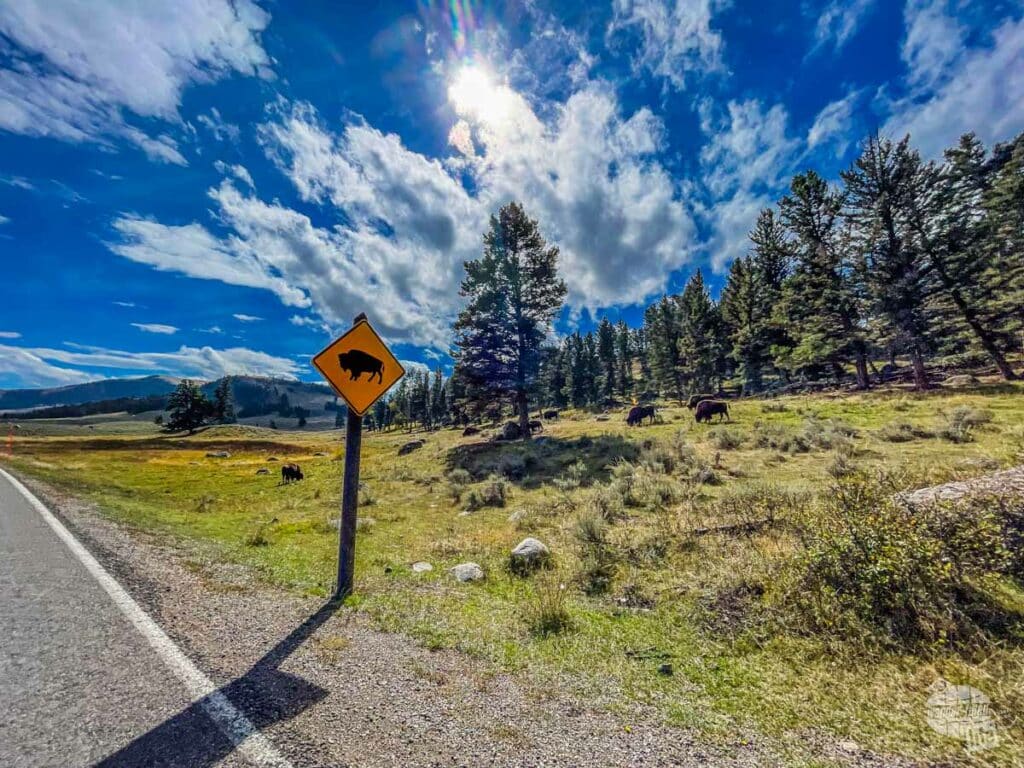
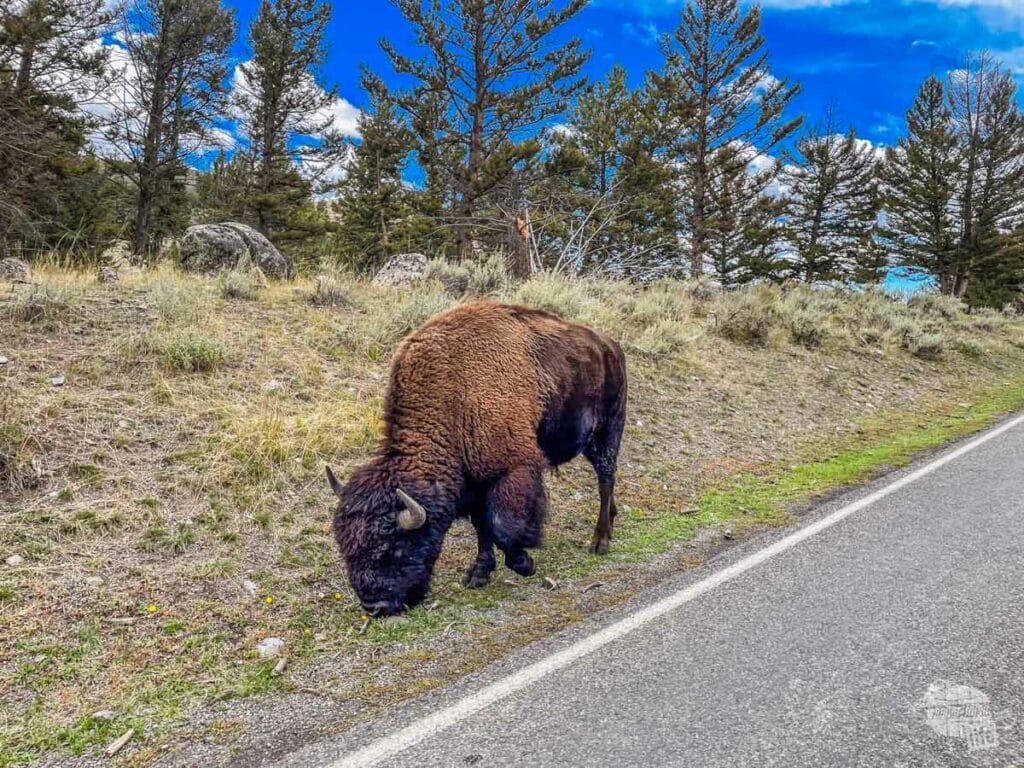
In terms of dinner in Gardiner, we enjoyed The Antler Pub and Grill. It wasn’t anything fancy but the food was good. While service wasn’t particularly quick, I think that is because they were very busy and understaffed.
We’ve also heard great things about Wonderland Cafe. Unfortunately, the one night we were in town for dinner, the waitlist was already full for the entire evening by the time we arrived.
And, one downside to visiting later in the fall is that more and more businesses will be closed, operating on limited hours or understaffed. Again, that is the tradeoff for fewer crowds.
Day 2 – Mammoth Hot Springs to Canyon
Today, you’ll spend time on the north and east sides of the park. The thermal features in this area are far fewer and different from those found on the west side. You’ll also find a wider variety in the landscape.
Morning
Spend most of your morning in Mammoth, checking out the “town” and the hot springs. Yellowstone National Park’s headquarters are located in Mammoth and you’ll find many administrative buildings, along with employee housing in this area. As such, keep in mind that not all buildings are open to the public.
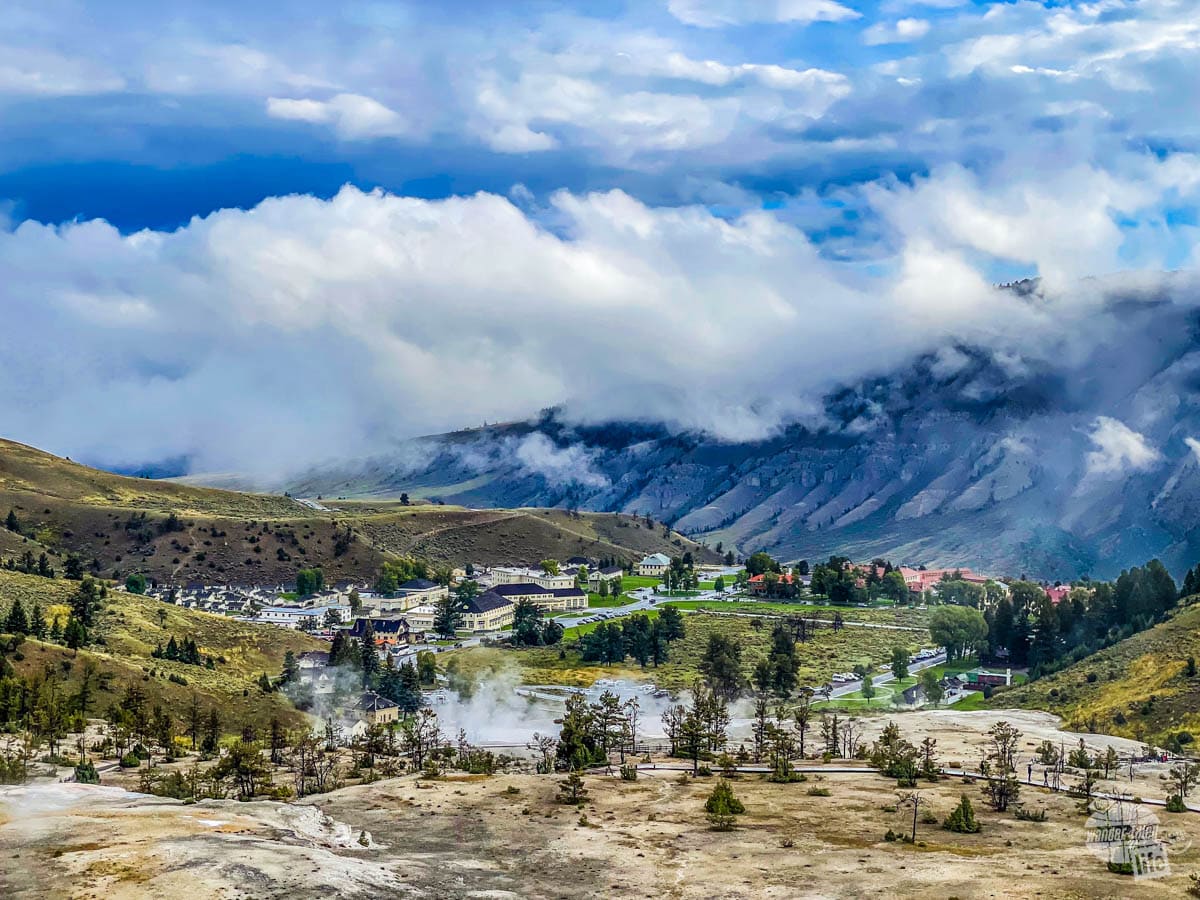
This area dates back to 1886 when the US Army took charge of Yellowstone National Park. Indeed, the Mammoth Hot Springs Historic District includes 35 structures from Fort Yellowstone. The Albright Visitor Center is open year-round and offers free, public WiFi. This is a great place to start your visit to Mammoth.
Other than simply checking out the historic buildings, the main attraction of Mammoth is the namesake Hot Springs. Right in town, you’ll find parking by the Lower Terraces Area. Here a boardwalk snakes through the terraced hot springs. Farther up the road, you can access the Upper Terraces Drive loop, which also connects to the lower boardwalk.
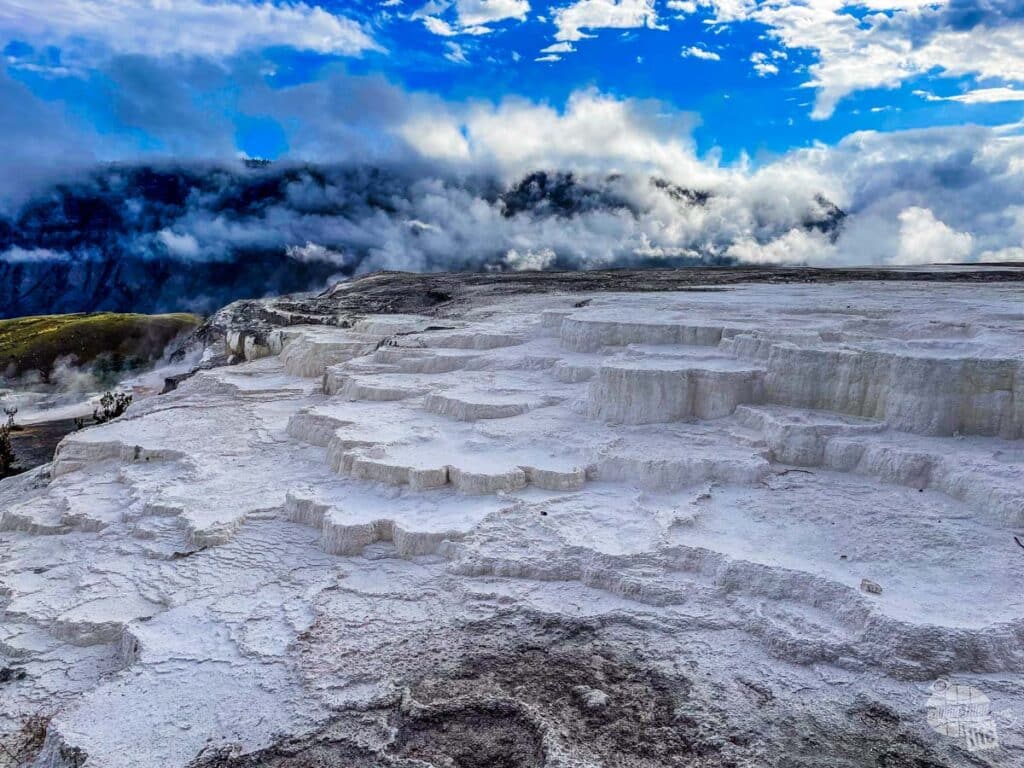
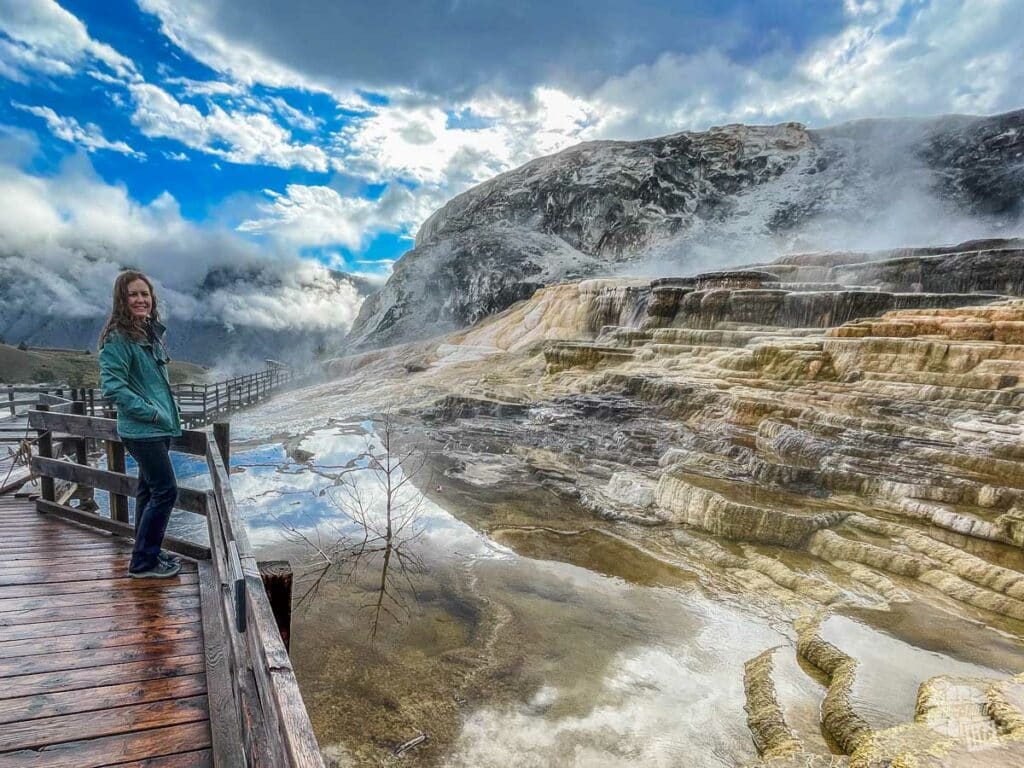
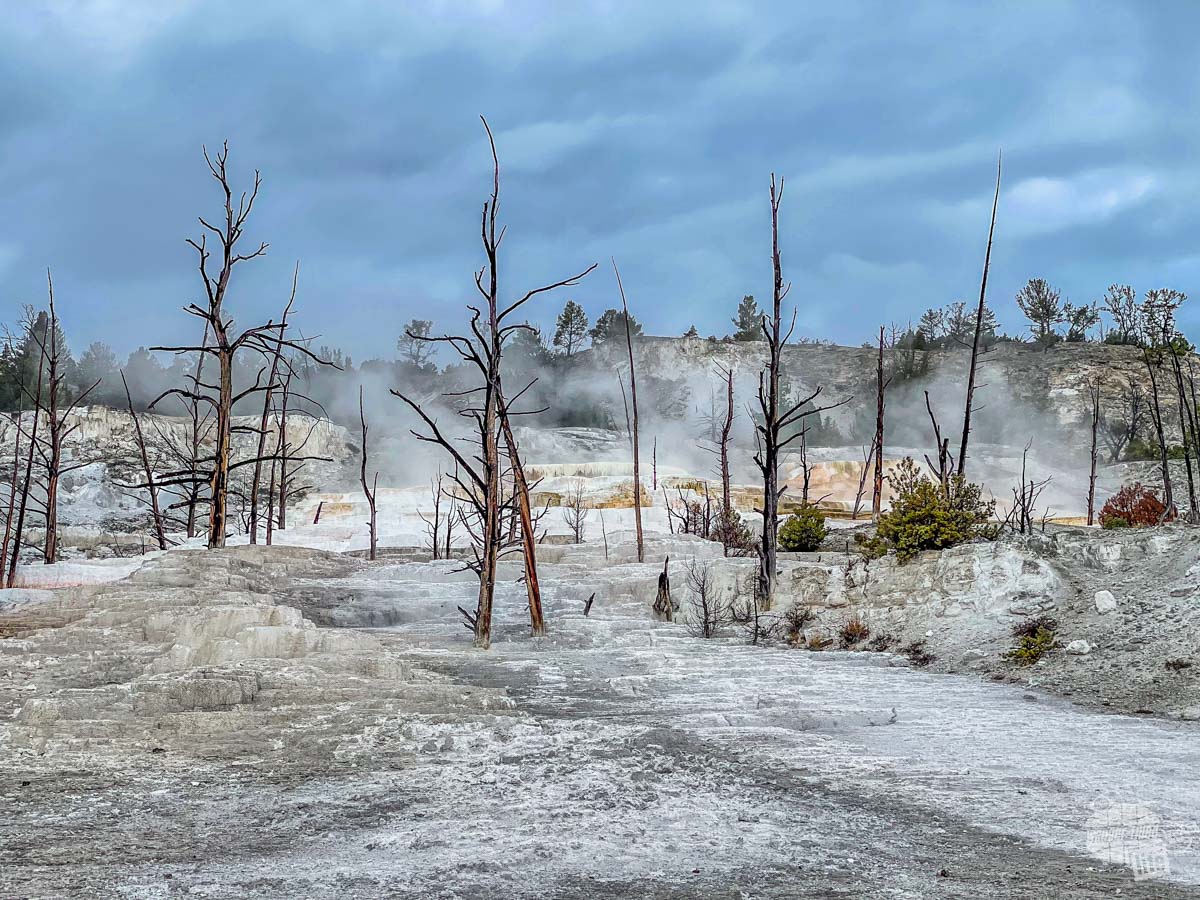
While the boardwalk does have stairs in a few places, it is a relatively easy walk that you can make as long or short as you want. Spend as much time as you’d like checking out this area.
From here, drive east towards Tower Junction. Depending on time (and time of the year), pick up lunch either before leaving Mammoth or at Tower.
Afternoon
Make a quick stop at the Forces of the Northern Range turnout. Here, a short (1/2-mile) loop boardwalk takes you past several exhibit signs on Yellowstone’s landscape.
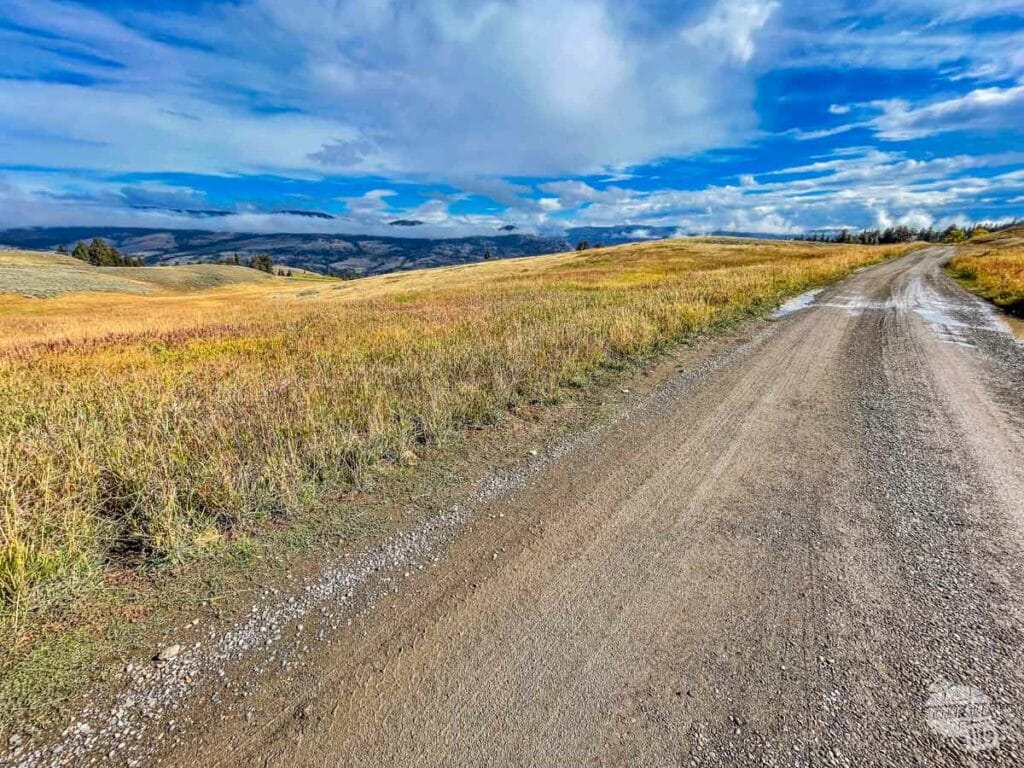
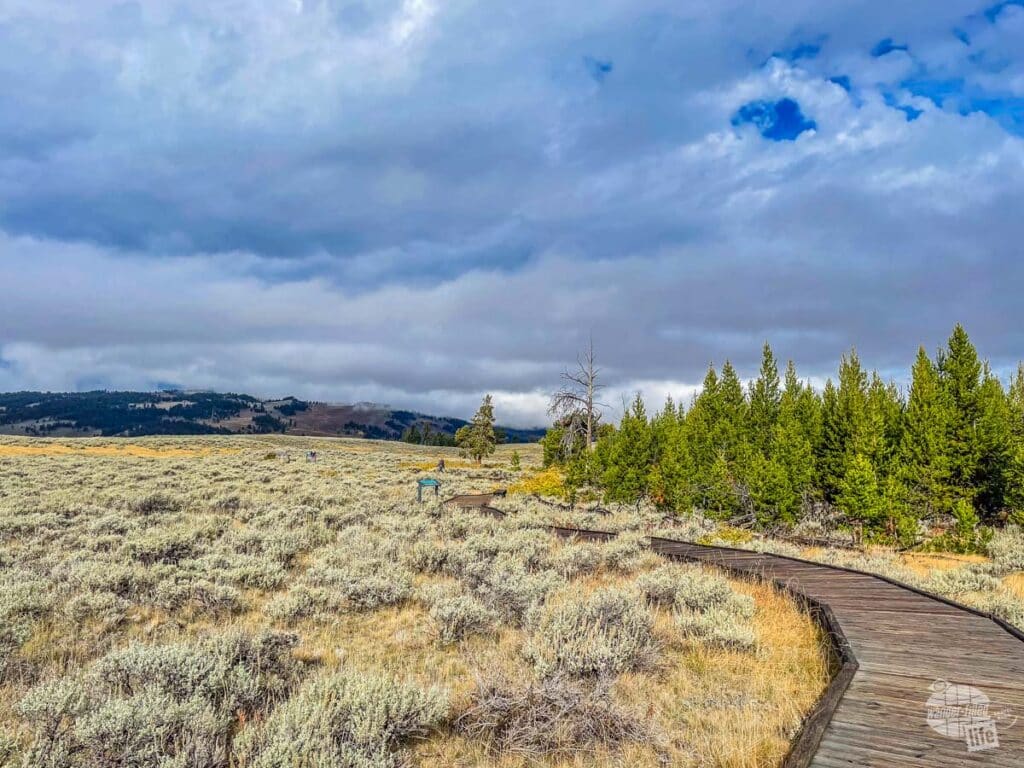
Back in your car, drive east and take the one-way, unpaved Blacktail Plateau Drive, if conditions are favorable. We drove this in our rented Dodge Charger without any problems. That said, conditions change with the weather so check it out for yourself. Getting off the main road allows you to see a bit of the “backcountry” and offers greater opportunity for seeing wildlife.
Return to the main road and continue south. At Tower, walk the short paved path to Tower Falls, where Tower Creek drops 132 feet. The General Store is also a great place to pick up souvenirs or lunch.
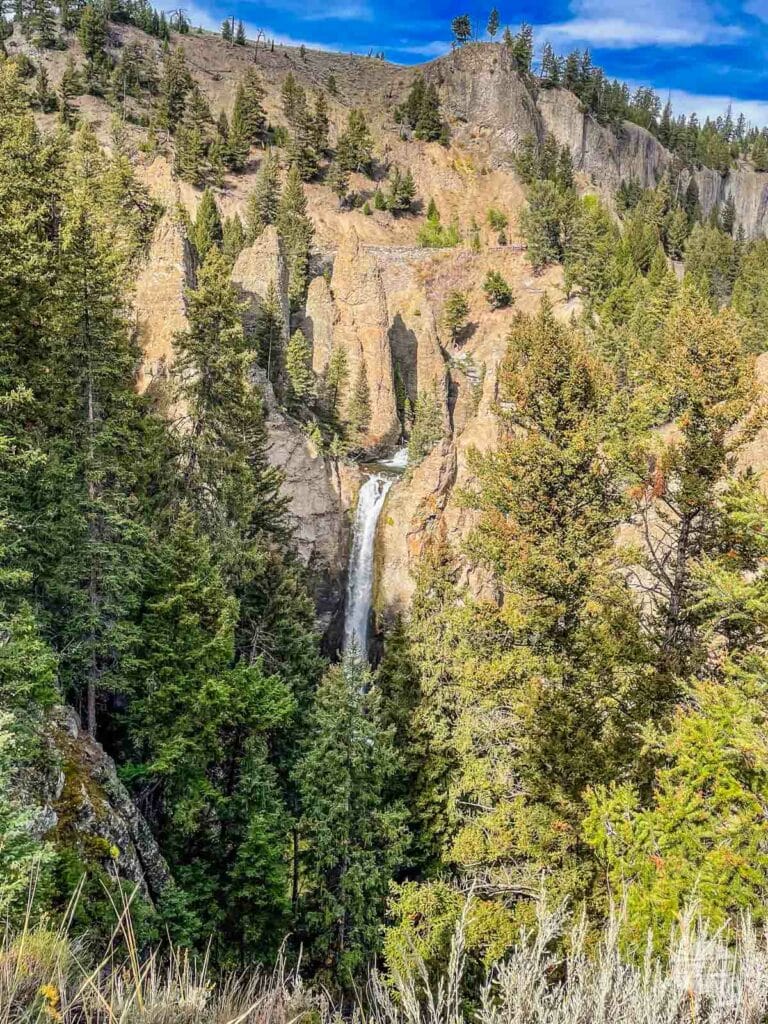
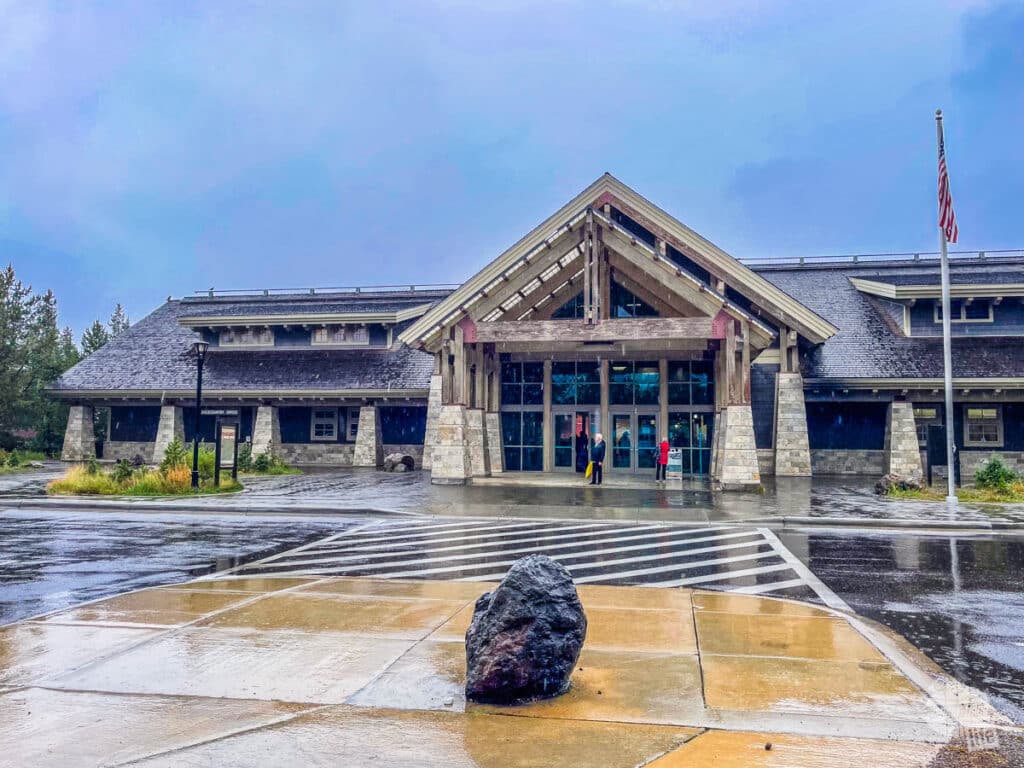
Continue south to Canyon, making your way over Dunraven Pass, at an elevation of 8,859 feet. As the highest elevation along the road, this area is prone to road closures if winter weather moves in.
Canyon Village is home to the Grand Canyon of the Yellowstone, one of the most dramatic landscapes inside the park. At Canyon Village, you’ll find another visitor center, with a great overview map of the park. There also are several places to get food and shop.
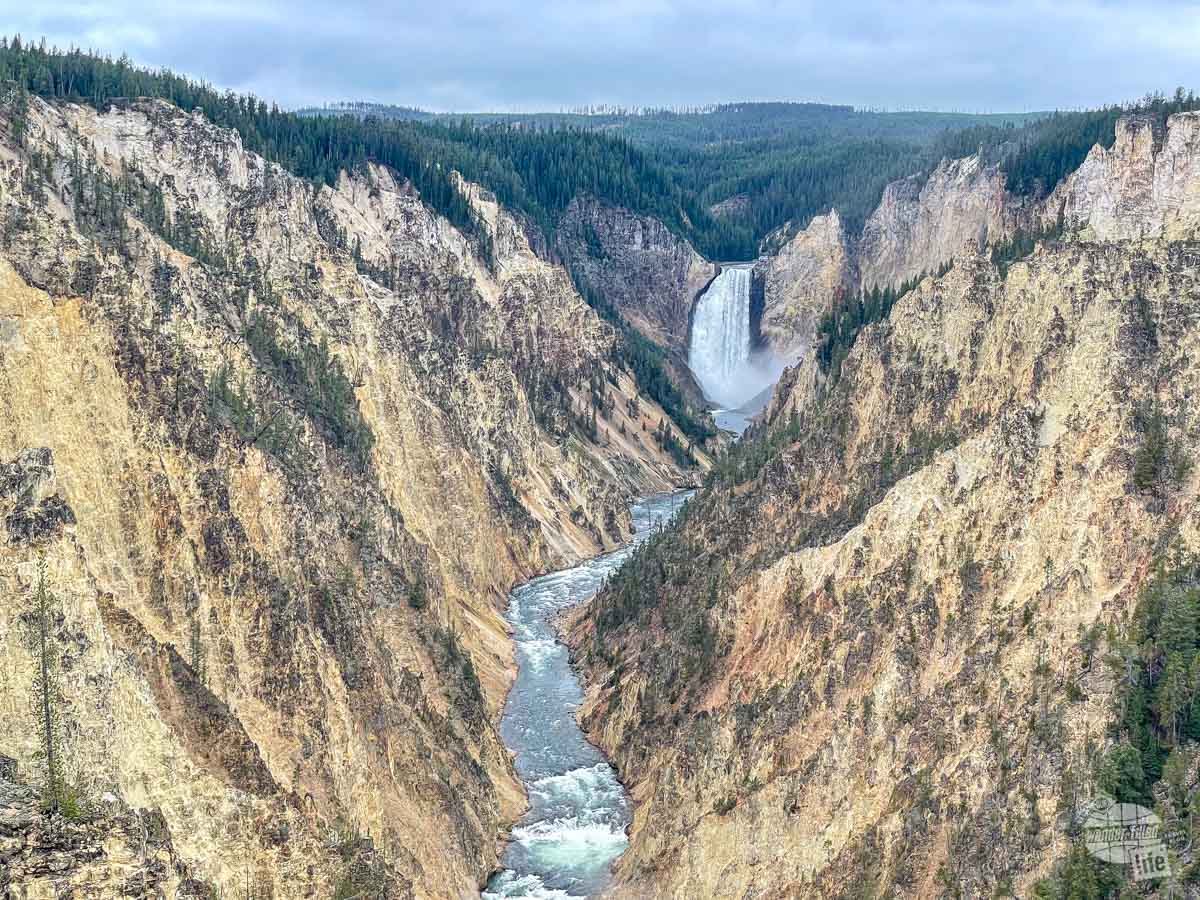
For views of the canyon, follow South Rim Drive to the end and check out Artist Point, where you can see the Lower Falls. There is a separate parking area for the Upper Falls viewpoints. Along North Rim Drive, there are several parking areas and viewpoints. Of course, there are also a variety of hiking trails if you have more time and really want to stretch your legs.
Evening
Just south of Canyon, you’ll enter Hayden Valley, another great place to view wildlife at Yellowstone National Park. We especially enjoy driving through both Hayden and Lamar Valley around dusk. Of course, in the fall, you have to balance that with dinner and the setting sun.
If time allows, drive through Hayden Valley searching for bison, wolves, bears and other wildlife.
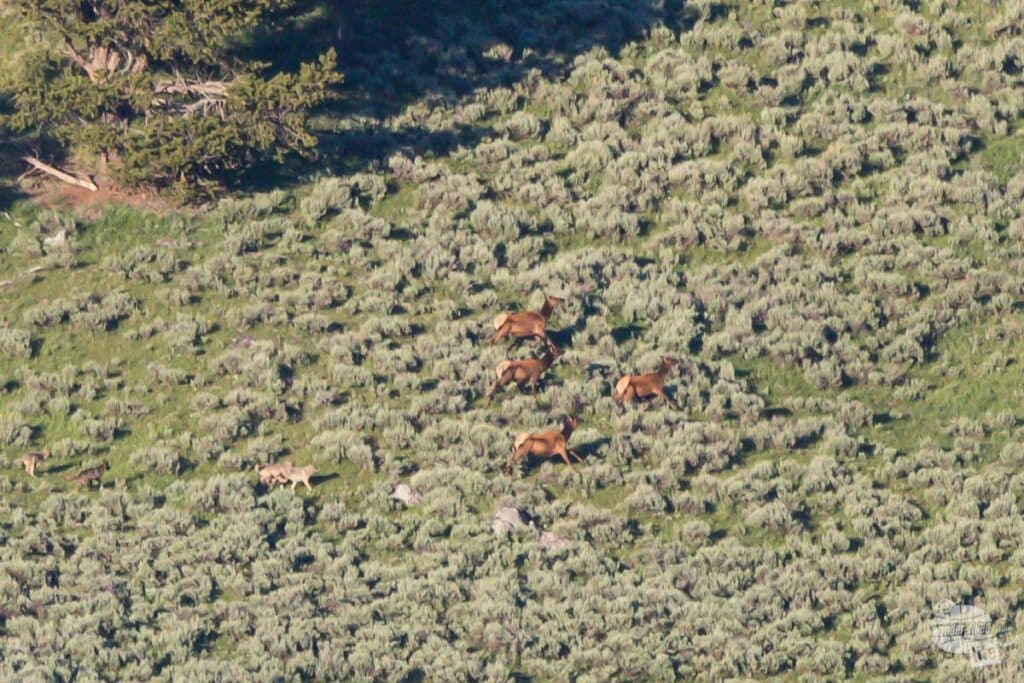
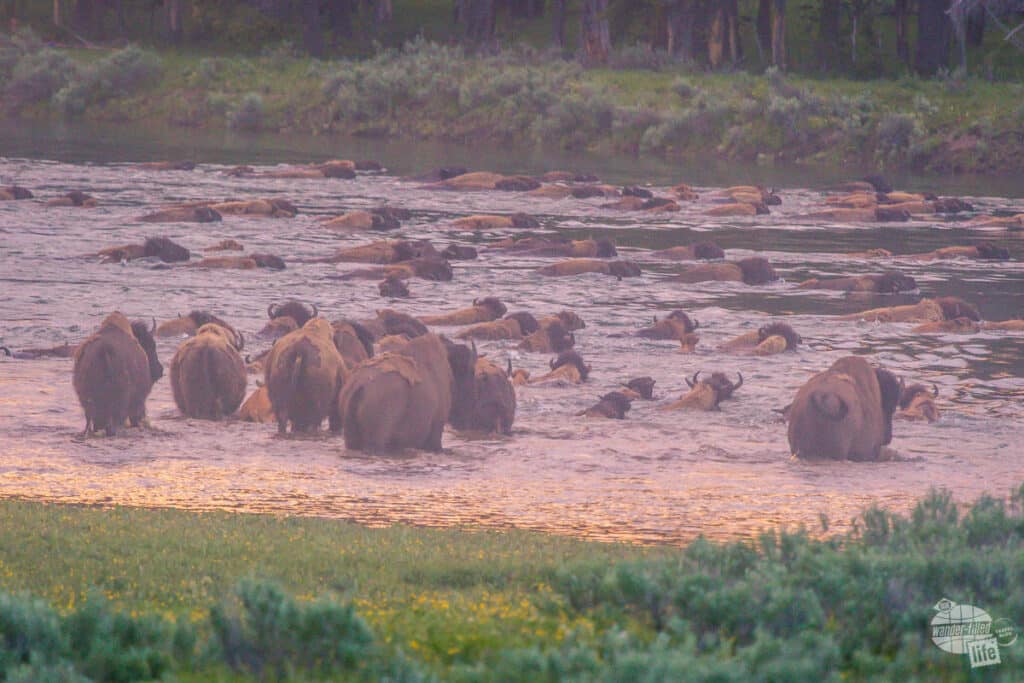
You could also consider driving over to West Yellowstone for dinner. West Yellowstone is a bit more touristy than Gardiner and just has a different vibe, overall. Both are great towns and can make a good base for visiting the park.
In terms of dinner in West Yellowstone, we recommend The Buffalo Bar. From what we’ve heard, it’s one of only a couple of restaurants that are open year-round. We actually met a few friends here and our party of 8 had a great experience. Everyone enjoyed the food and there is also a great beer menu!
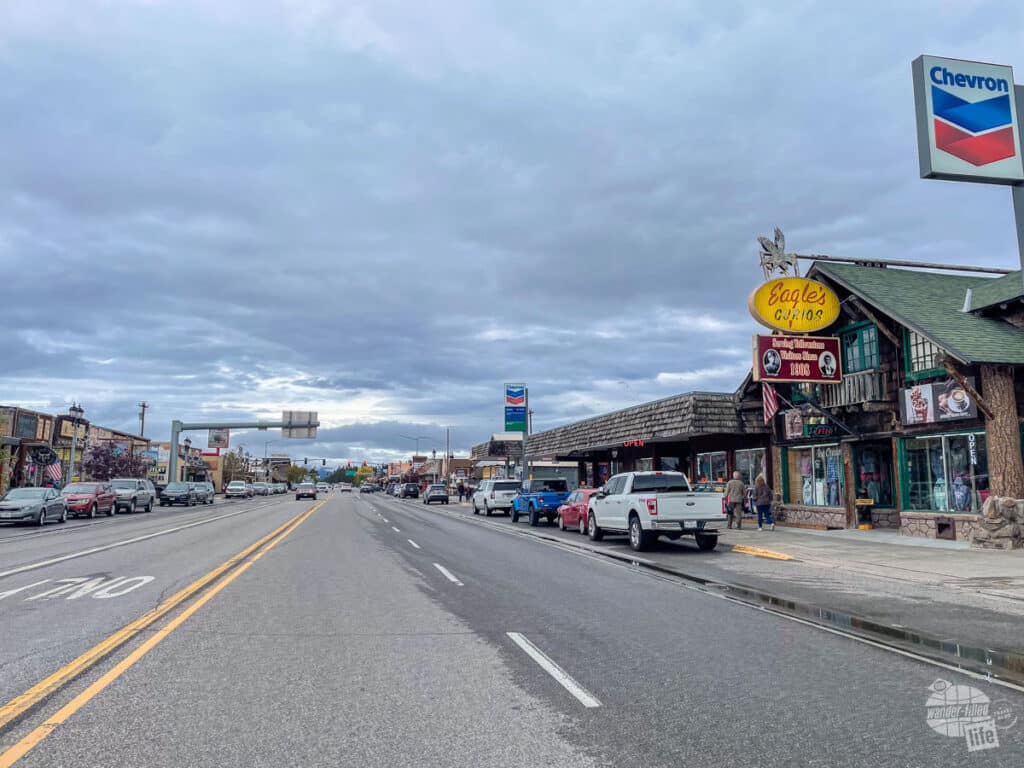
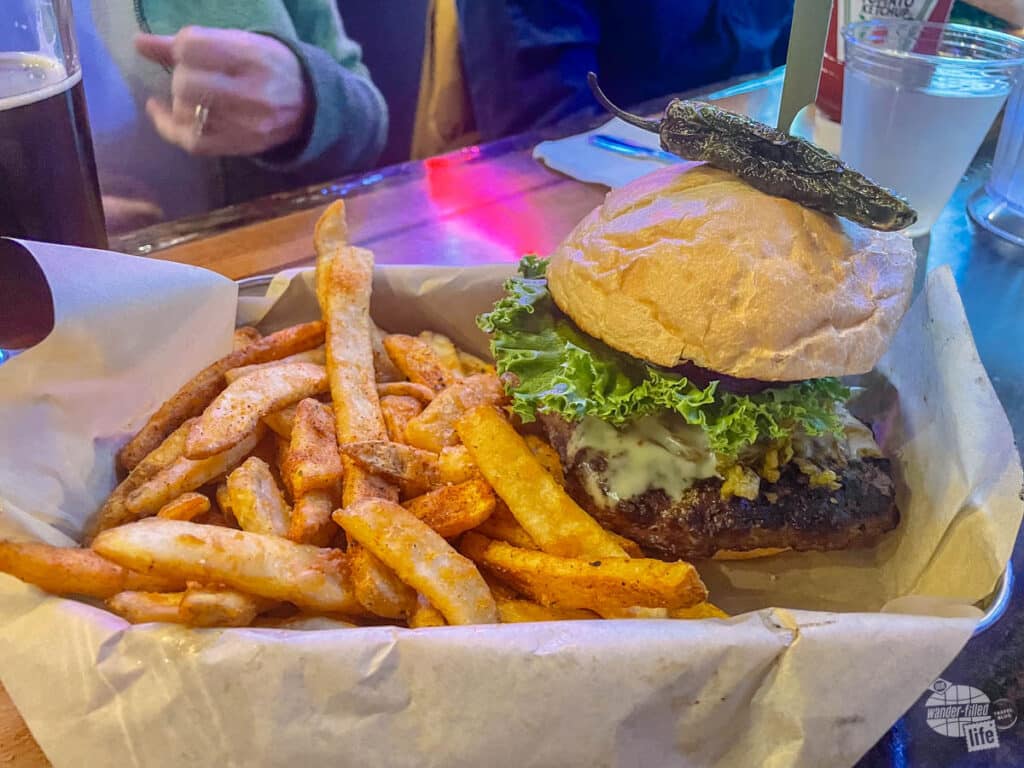
Of course, if driving back to Gardiner or another area of the park after dark, take your time and watch out for wildlife. We encountered fog on our way back which made this one of the most harrowing drives we’ve done in many years! And, yes, we passed a lone bison running along the side of the road on the way. Thankfully, he was running parallel to the road but if he had wandered onto the road, that would have been bad.
Day 3 – West Thumb and Lake/Fishing Bridge
For your final day at Yellowstone, you’ll finally make your way to the southern end of the park. While this is a great area, it is less developed so you won’t find quite as many stops as you drive around. Typically, there is less wildlife, too. Of course, the animals go wherever they want so that doesn’t mean you won’t find any wildlife!
Morning
Start your day with a hearty breakfast at Yellowstone Perk, a small coffee shop in Gardiner right outside the Roosevelt Arch entrance to the park. I enjoyed the Huckleberry Yogurt & Granola, while Grant opted for the Breakfast Burrito, filled with eggs, cheese, hash browns and your choice of meat. Both were outstanding and kept us filled until lunch!
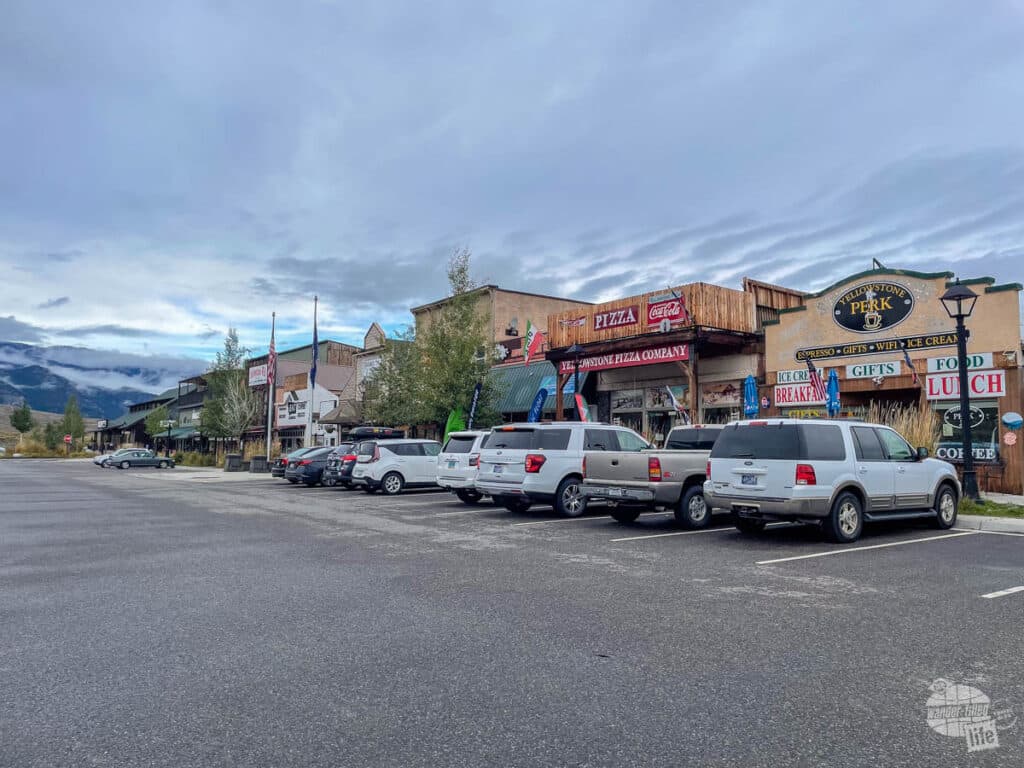
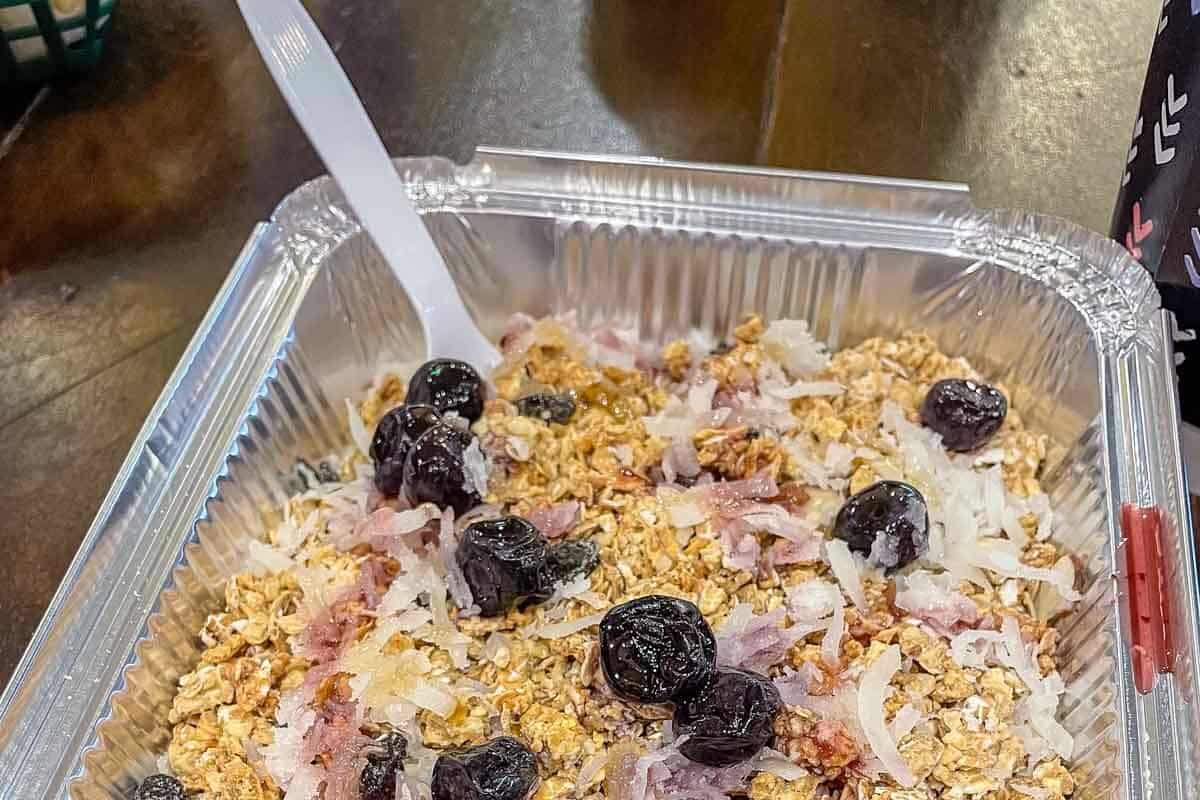
Spend your morning making your way to the south end of the park. We recommend driving along the west side and stopping at any roadside pullouts that you missed on Day 1. You may want to pick up lunch at Old Faithful since services are limited farther south.
If time allows, one of our favorite hikes is to Lone Start Geyser (5 miles roundtrip), which is found near Kepler Cascades, just south of Old Faithful. The trail follows an old service road alongside the Firehole River. It is relatively flat and bicycles are allowed on most of it. At the end stands Lone Star Geyser, which erupts approximately every three hours.
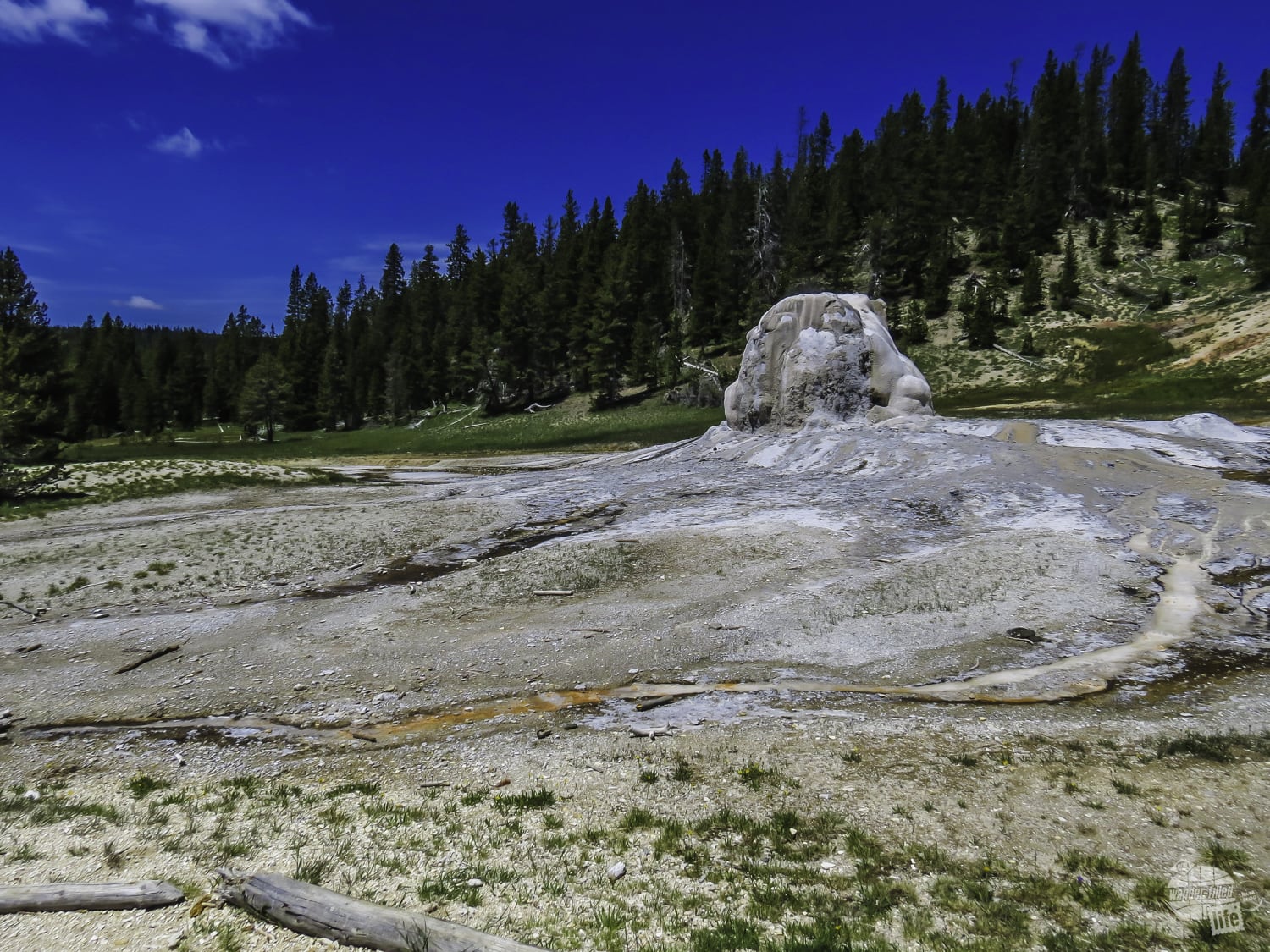
Check with a ranger at Old Faithful for the predicted eruption time and plan your hike accordingly. It is a nice hike either way but seeing the geyser erupt would be special. Alas, when we did this hike back in 2017, we missed the eruption, which was disappointing.
Just a little farther south, be sure to stop at Isa Lake, which straddles the Continental Divide at Craig Pass. This is the only natural lake in the world that drains into two different oceans. And, in an interesting twist, when there is heavy snowmelt the east side drains to the Pacific and the west side drains to the Atlantic.
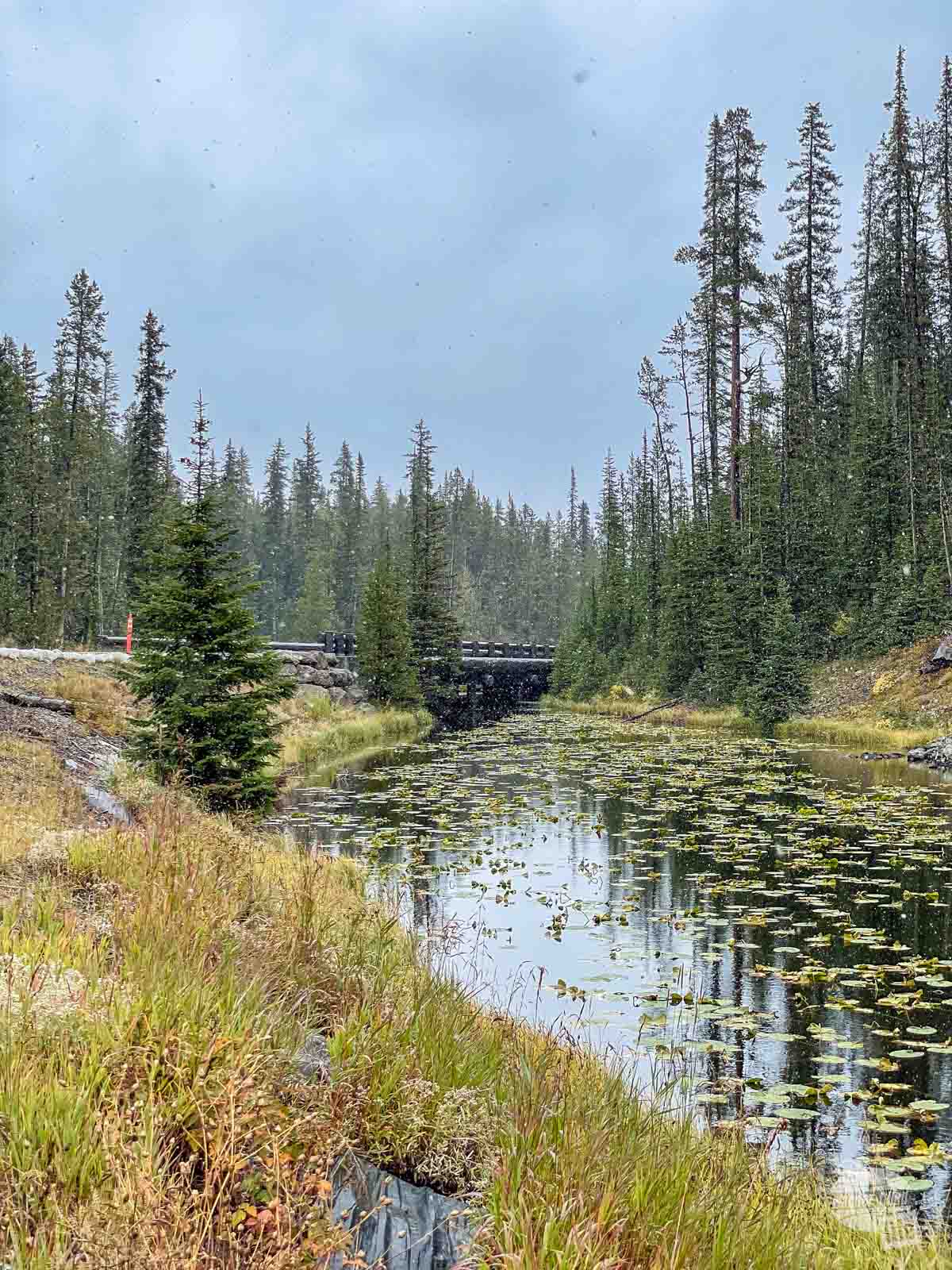
It is also worth noting that Craig Pass sits at 8,262 feet. What began as rain quickly turned to snow as we climbed in elevation. The road stayed open and was easy to drive, but this area is prone to road closures if conditions get bad.
Afternoon
Stop at West Thumb and take a quick stroll around the geyser basin here. One of the most interesting thermal features here is the Fishing Cone. Many years ago, fishermen used to catch fish in Lake Yellowstone and then cook them over the heat of the hot spring.
Today, we know that this is not healthy and actually quite dangerous. As such, this practice is prohibited and, quite frankly, just not a good idea!
We’ve enjoyed stops at West Thumb in the past. Sadly, on our recent fall visit to Yellowstone, it was so cold (and snowing) that all we could see was steam from the thermal area. We didn’t even try to walk around because the steam was so thick.
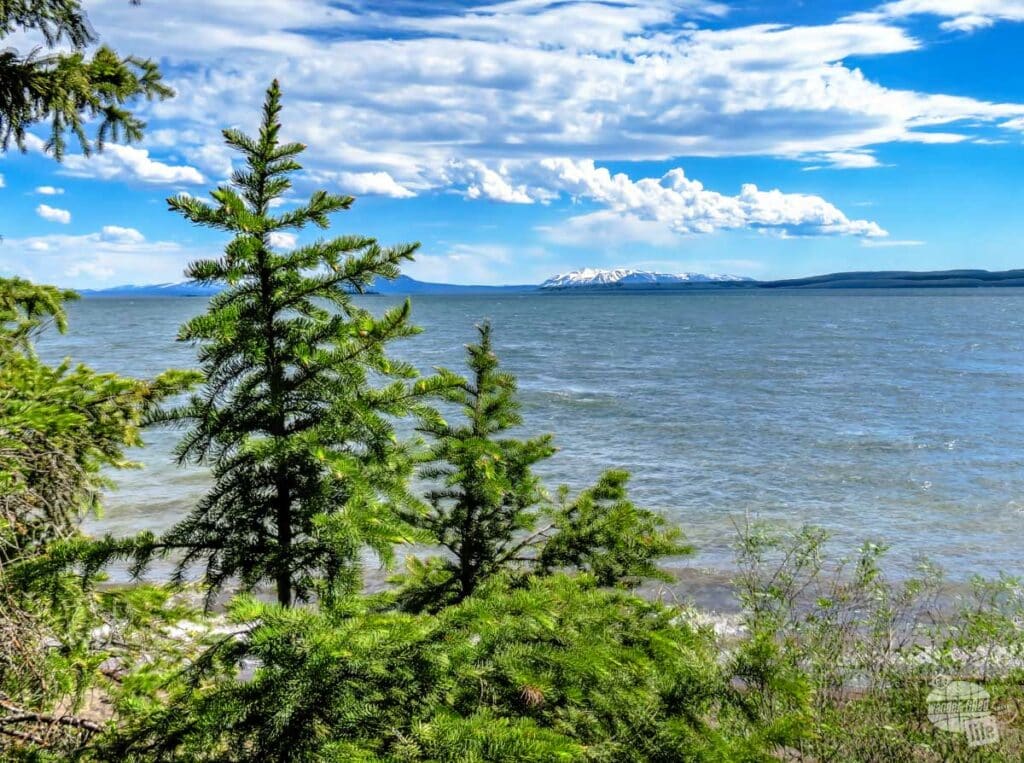
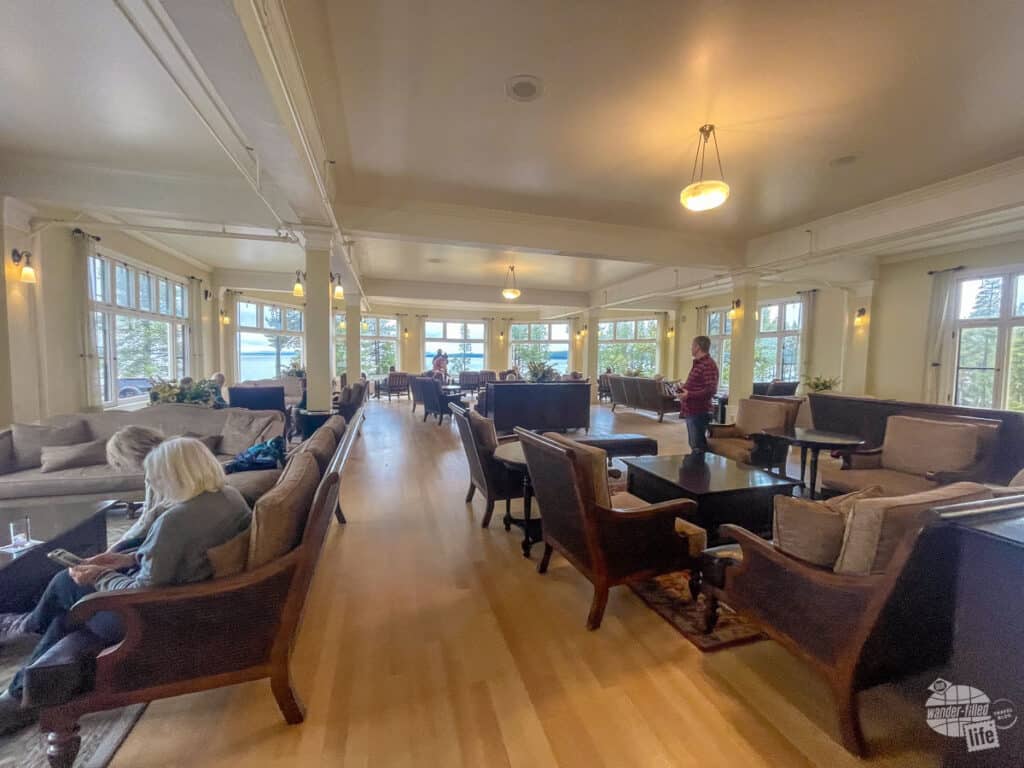
Continue up to the Lake area and/or Fishing Bridge. In the summer, there is a bustling marina along Lake Yellowstone, with boat tours, fishing charters and other activities. In the fall, all of this is closed down. It actually makes for a very relaxing area of the park.
So, we suggest you spend the afternoon driving around, enjoying the scenery and stopping anywhere you want. This is the night that we splurged on a room at the Lake Yellowstone Hotel, one of the nicest lodges in the park. Even if you aren’t staying there, feel free to pop in for a look at its grand lobby. (The rooms are much more basic but comfortable.)
You can also drive out the east entrance towards Cody. The drive follows Lake Yellowstone for a while, with several pullouts and overlooks along the way. Don’t try to drive all the way to Cody unless you are staying there.
Evening
For your last night, enjoy a meal at Lake Yellowstone Dining Room or, perhaps, at Old Faithful or Mammoth. Most of the restaurants inside the park offer locally sourced ingredients and, frequently, game meat for those who want a more adventurous meal. Yes, they typically have more traditional meats and vegetarian dishes as well.
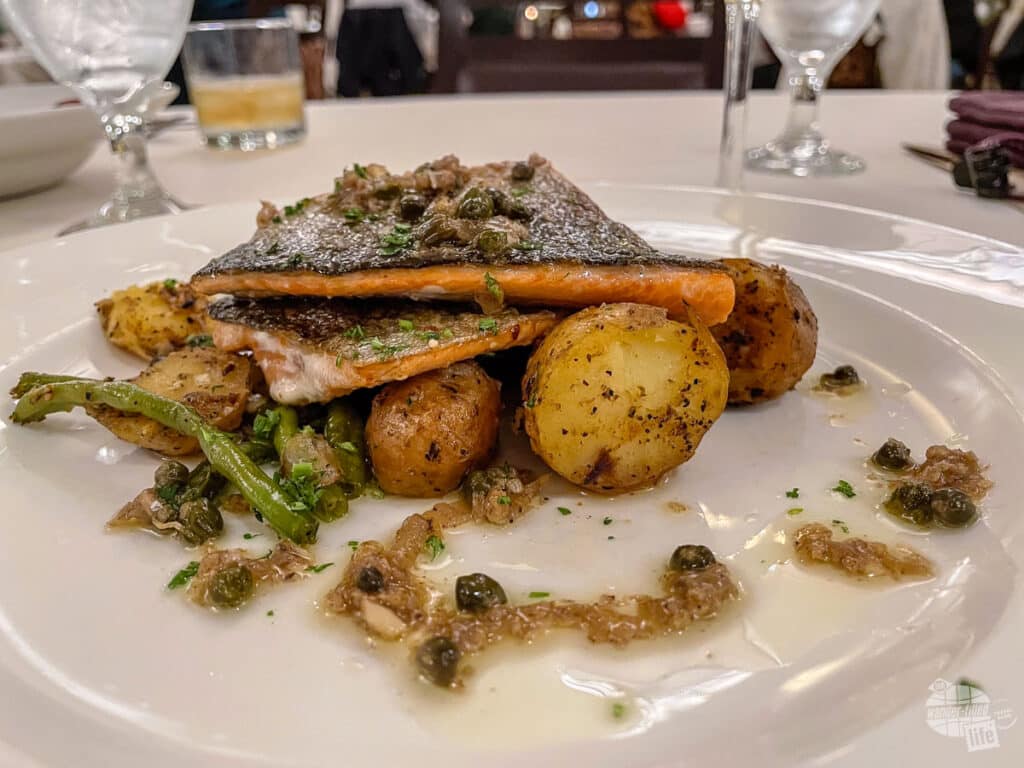
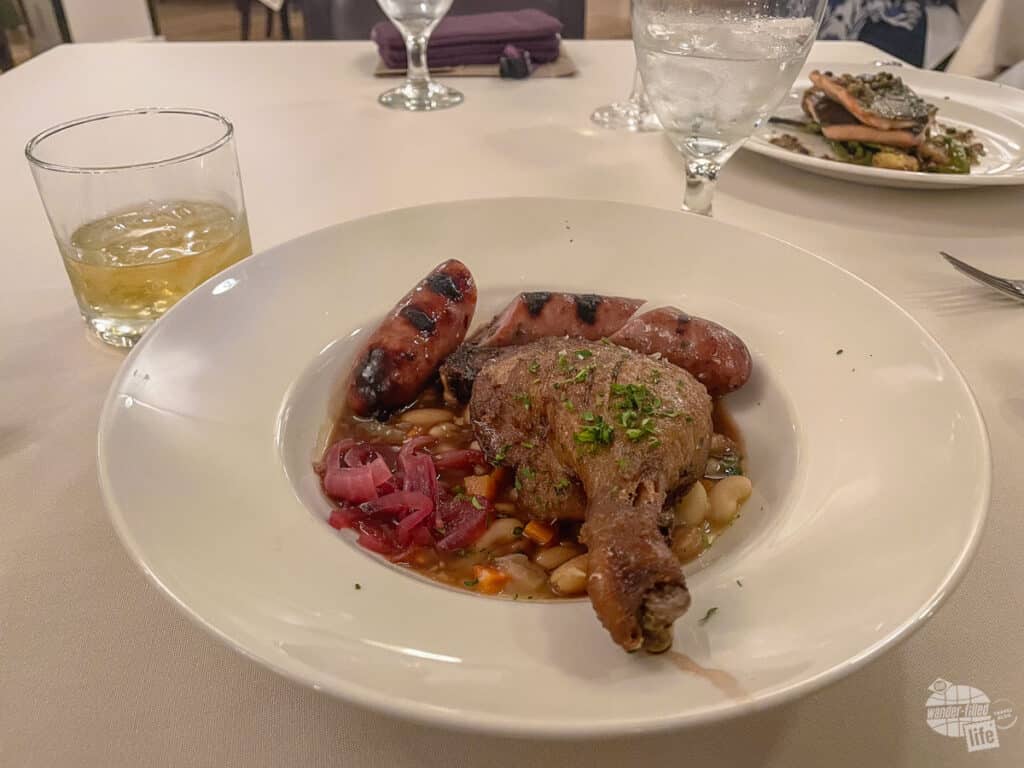
At the Lake Yellowstone Dining Room, I enjoyed a nice trout dinner. Grant was thrilled to get the Cassoulet including jackalope sausage with pork, rabbit and antelope, along with a duck confit.
It really was a great meal to end a fantastic fall visit to Yellowstone. Perhaps our biggest frustration to visiting this time of year is that we didn’t get to eat at the Roosevelt Lodge which is, hands down, our favorite restaurant in the park.
With More Time
This three-day itinerary for Yellowstone in the fall hits the highlights of the park, taking seasonal closures into consideration. With more time, I would take more time to fully explore the geyser basins and stop at more roadside pullouts. Seriously, I think there are still some that we haven’t checked out even after five visits to the park.
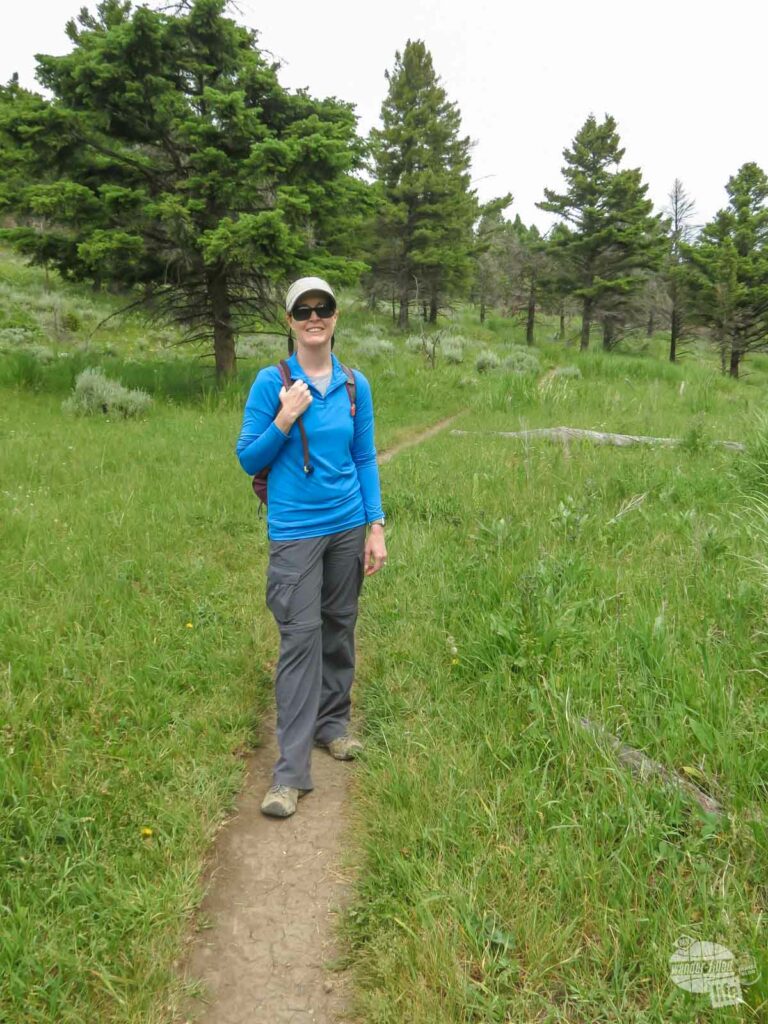
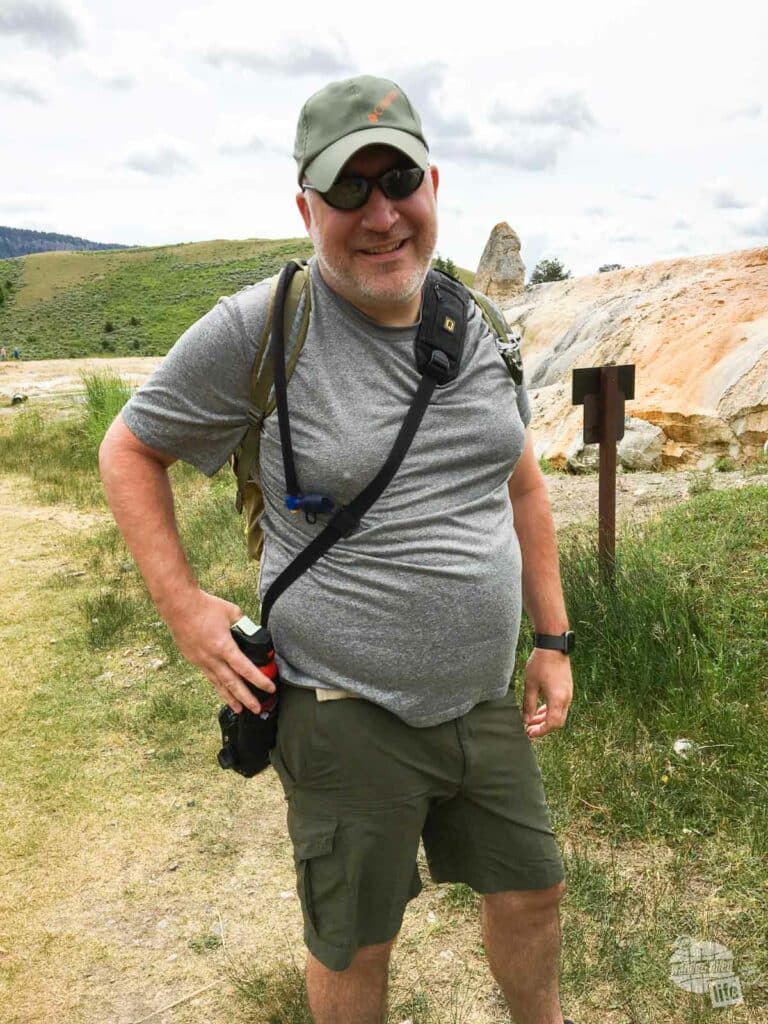
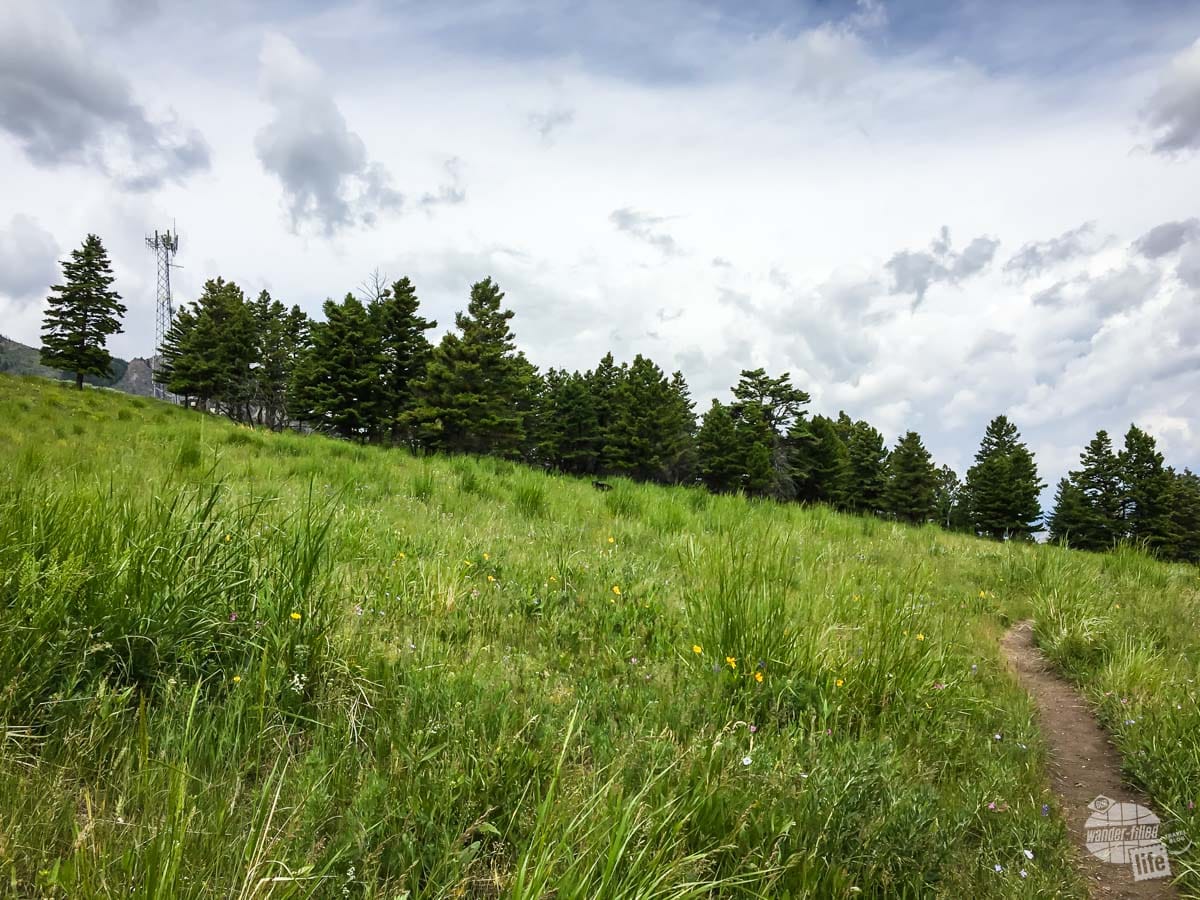
There are also many great hiking trails around Yellowstone. Yes, some of them take you deep into the backcountry. But, many are fairly accessible even for casual hikers. With more time, we certainly suggest getting off the beaten path and enjoying the solitude of the trails. Just be sure to carry bear spray!
Finally, you can always spend more time looking for wildlife. Really, you should be doing that anytime you are driving around the park. But having additional mornings and evenings for wildlife watching to be your primary focus would be great!
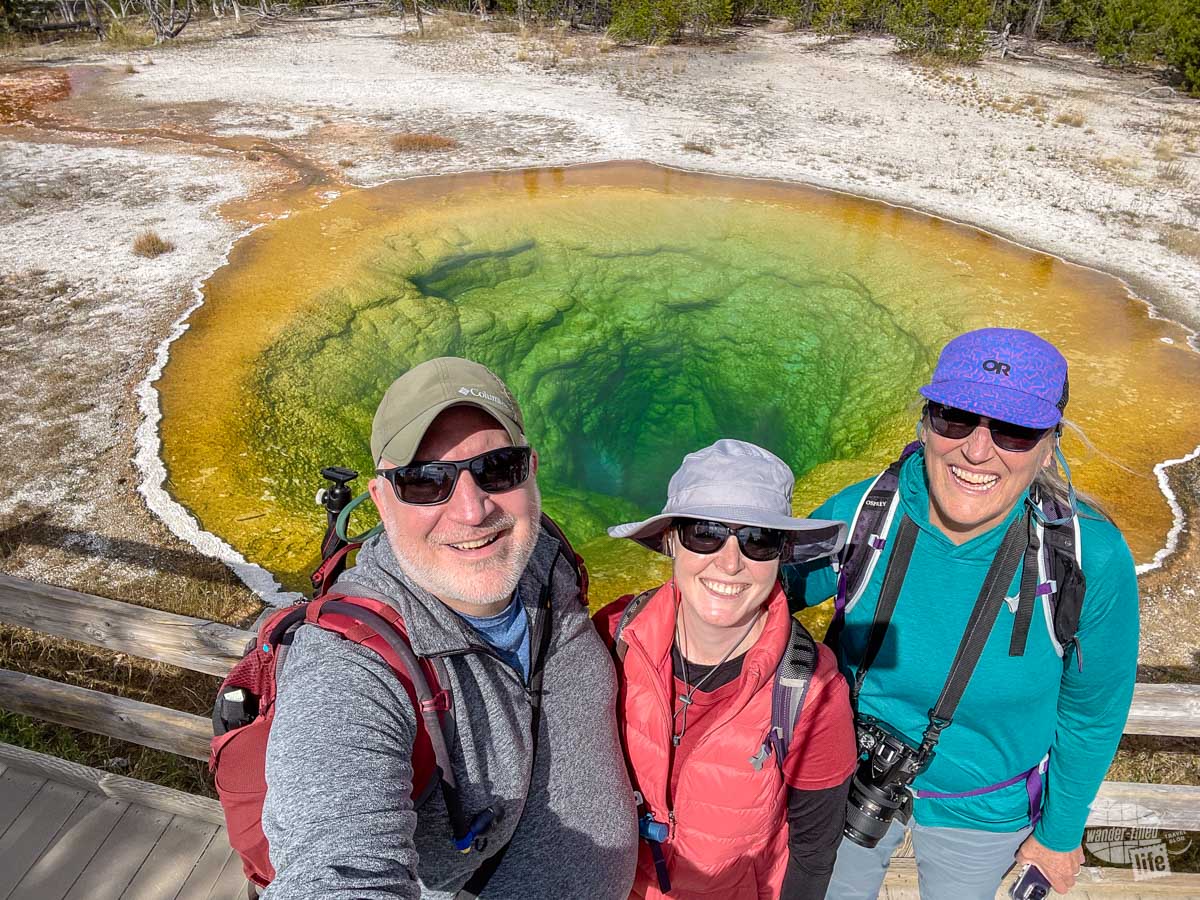
For more details on various areas of the park, our friend and fellow Moon author Becky Lomax has two different guidebooks to choose from: Yellowstone & Grand Teton: Hike, Camp, See Wildlife and Best of Yellowstone & Grand Teton: Make the Most of One to Three Days in the Parks. We’ve used both of these on our previous visits to the park and have found them to be filled with lots of great information! Insider Tip: we met up with Becky during our September 2023 visit while she was doing research for an upcoming new edition of her Yellowstone books!
RVing to Yellowstone
If you are planning an RV trip to Yellowstone, check out our book, Moon USA RV Adventures. We include Yellowstone National Park on several of our itineraries. Our most complete Yellowstone visits are found on the Wild Wyoming and Grand Loop itineraries. The Montana loop also takes a quick swing through the park.
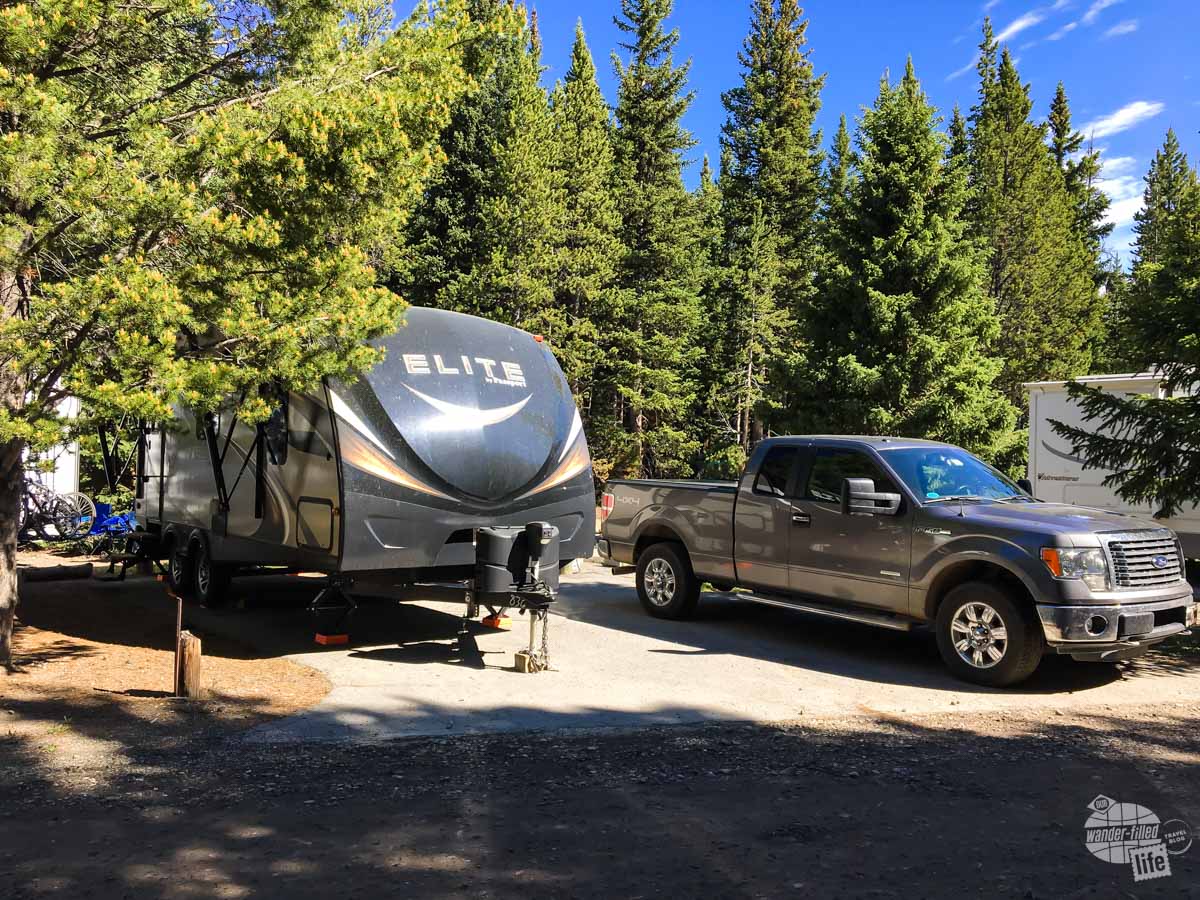
While the above three-day Yellowstone itinerary would work as a basic outline for traveling with an RV, an RV-specific itinerary might serve you better. Additionally, the book has information on campgrounds, including Fishing Bridge RV Park, the only campground inside Yellowstone that offers hookups.
- Sinclair, Bonnie (Author)
- English (Publication Language)
- 560 Pages – 02/28/2023 (Publication Date) – Moon Travel (Publisher)
Final Thoughts on Yellowstone in the Fall
Finding the right time to visit Yellowstone can be difficult. Each season has its pros and cons. The summer is the easiest time to visit since you’ll find everything open and plenty of services. The downside is the crowds.
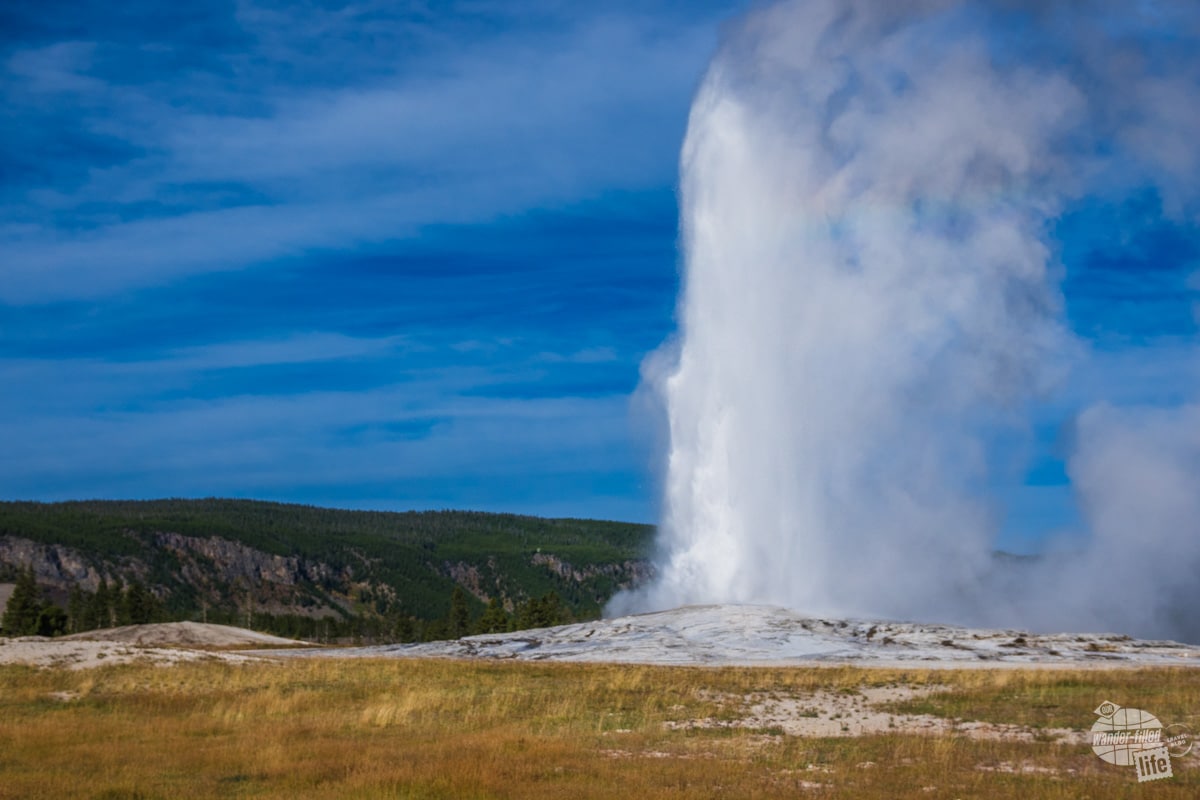
Winter in Yellowstone is absolutely magical. We visited in February 2011 and have been itching to return in the winter ever since. But, with most roads open only to over-snow vehicles, planning a winter visit isn’t cheap or easy.
We haven’t visited in the spring yet, since the opening of park roads doesn’t time well with our spring break. But we’d love to see the newborn bison and spring flowers. It’s definitely difficult to plan around the weather and roads, though.
Visiting Yellowstone in the fall was a pretty good balance of everything. While it was still somewhat crowded, it was far fewer people than we’ve seen when visiting in the summer. That was the biggest perk. The downsides were fewer services, some winter weather and shorter days.
But, if you know what to expect those are easy things to plan for!
Travel Resources
What do you use to find a flight?
We use Skyscanner to find deals on flights. Skyscanner has a great interface and compares tons of airlines for the best pricing and routing. That said, it does not always have every airline and some airlines will have better deals on their website. Still, Skyscanner is a great place to start.
Click here to search for a flight.
What do you use to find a hotel?
We typically stay at Hilton properties, so we use the Hilton website. You can find good Hilton Honors discounts or AAA discounts for a hotel there. We make great use of our free night certificates from our Hilton Honors American Express.
Click here to book a Hilton property.
If there are no Hilton properties available, we use TripAdvisor to read reviews and book the hotel. We find we can get the best price that way.
Click here to search for a hotel.
We recently partnered with Stay22 to add interactive maps to each of our destination posts. This will allow you to see a plethora of hotels and vacation rentals all in one responsive map of the area.
What if I need more space than I can get at a hotel?
We use Vrbo for the times when we have rented a cabin for a weekend getaway, like this cabin in Townsend, TN, or needed to rent a house for a large family vacation. We had a great experience with them in terms of refunding deposits when COVID hit and will continue to use them.
Click here to search for a vacation rental.
Who do you use for rental cars?
As a general rule, we book with Hertz for rental cars. We have had nothing but good experiences with them. Plus, we really like unlimited mileage and not worrying about crossing state lines. We have even rented from Hertz overseas in both Slovenia and Croatia.
Click here to book a rental car.
How about booking a cruise?
We have found some amazing prices for booking a cruise through Cruise Direct. We have saved a lot of money on our cruises compared to what we found elsewhere, making a last-minute Bahamas cruise even cheaper.
Click here to book a cruise.
What if I want to rent an RV?
We highly recommend Outdoorsy for RV rentals. We rented a camper van for a week to visit Rocky Mountain National Park for the elk rut and Custer State Park for the Buffalo Round-Up and had a blast. The program was easy to use and we really enjoyed the freedom of having a camper van for that trip.
Click here to rent an RV.
What do you use for booking tours?
We don’t often book tours. Typically, we like to do stuff on our own. That said, there are some experiences you can’t have any other way. So, when we do want to book a tour, we always check Viator first.
Click here to book a tour.
Do you use anything to get discounts on the road?
We make extensive use of both Good Sam and AAA on the road. Good Sam is normally regarded as a discount card for RVers at campgrounds and Camping World but anyone can use the 5 cents off a gallon at the pump at both Pilot and Flying J.
Click here to get a Good Sam membership.
We have had AAA as long as we have been married and it has more than paid for itself in discounts at hotels, aside from the peace of mind of having roadside assistance. Add in paper maps and the ability to get an international driver’s license and it is more than worth it for any traveler out there.
Click here to get a AAA membership.
